As the garage door tilts open, my fingers grip around my phone. What would the category think … all I need to do is send a text, in the most apologetic tone a person can muster through the medium of the text message, and I won’t need to go through with this.
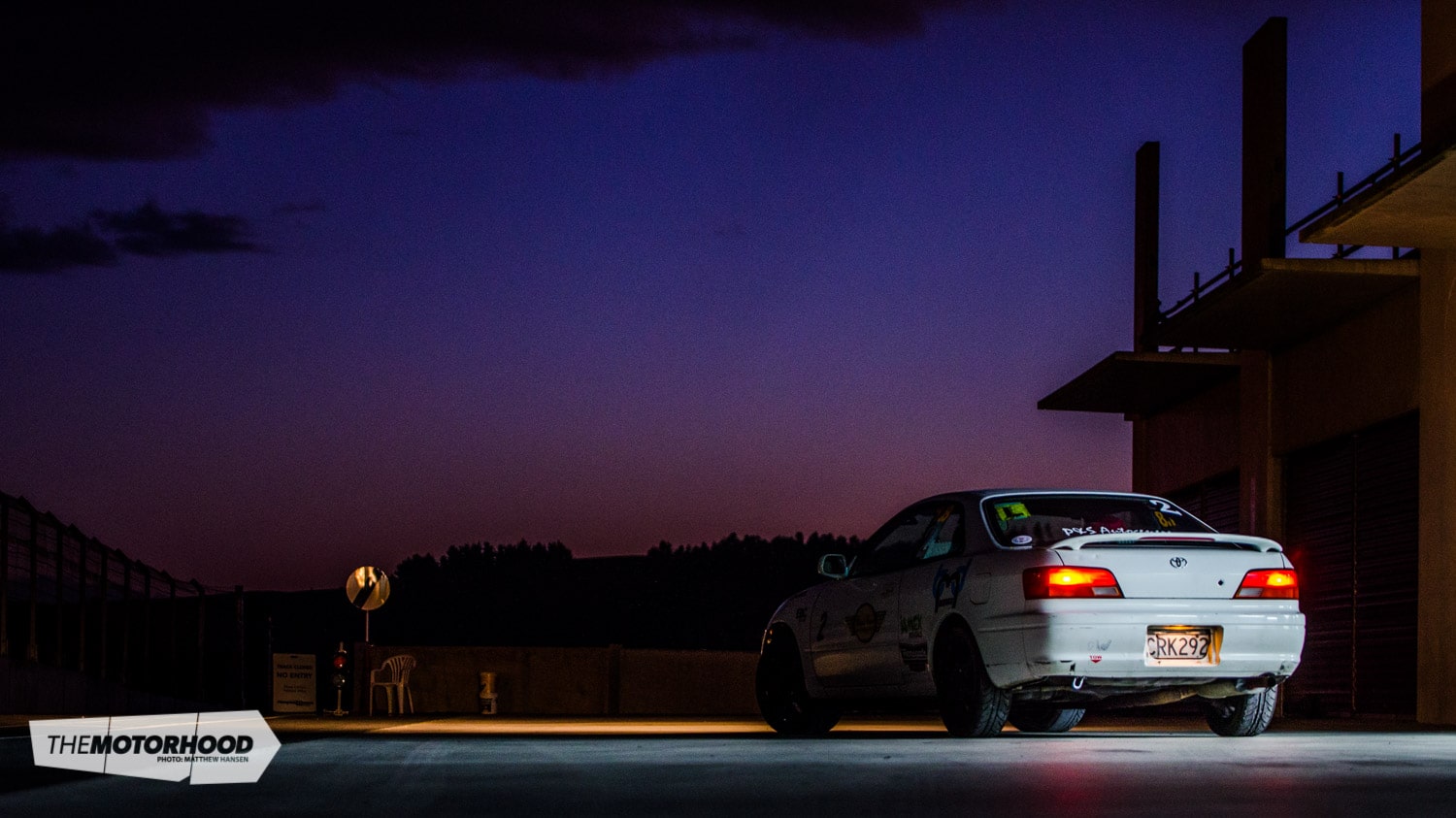
It’s kind of amazing really. I’ve interviewed former Formula 1 drivers, and I’ve worked for former Bathurst 1000 champions. I’ve stood within inches of rally drivers operating on gravel and tarmac at 110 per cent, and I’ve braved the forces of nature with tens of thousands of dollars of camera gear strapped to my person. Hell, I’ve even appeared on Chinese free-to-air television. But it’s this crummy Toyota Levin that’s making me feel the most ill of all. “Trust me, you’ll have a blast”, has to be one of the most dangerous combinations of words in the English language, since it’s the vintage precursor to almost every major adventure sport and thrill-seeking–based injury ever obtained. I had heard it three times from three separate people the night before, and it offered no comfort.
“F**k it.” I toss in my gear, fold my frame into the deep bucket seat, and ease onto the road. Time to man up.
Day one
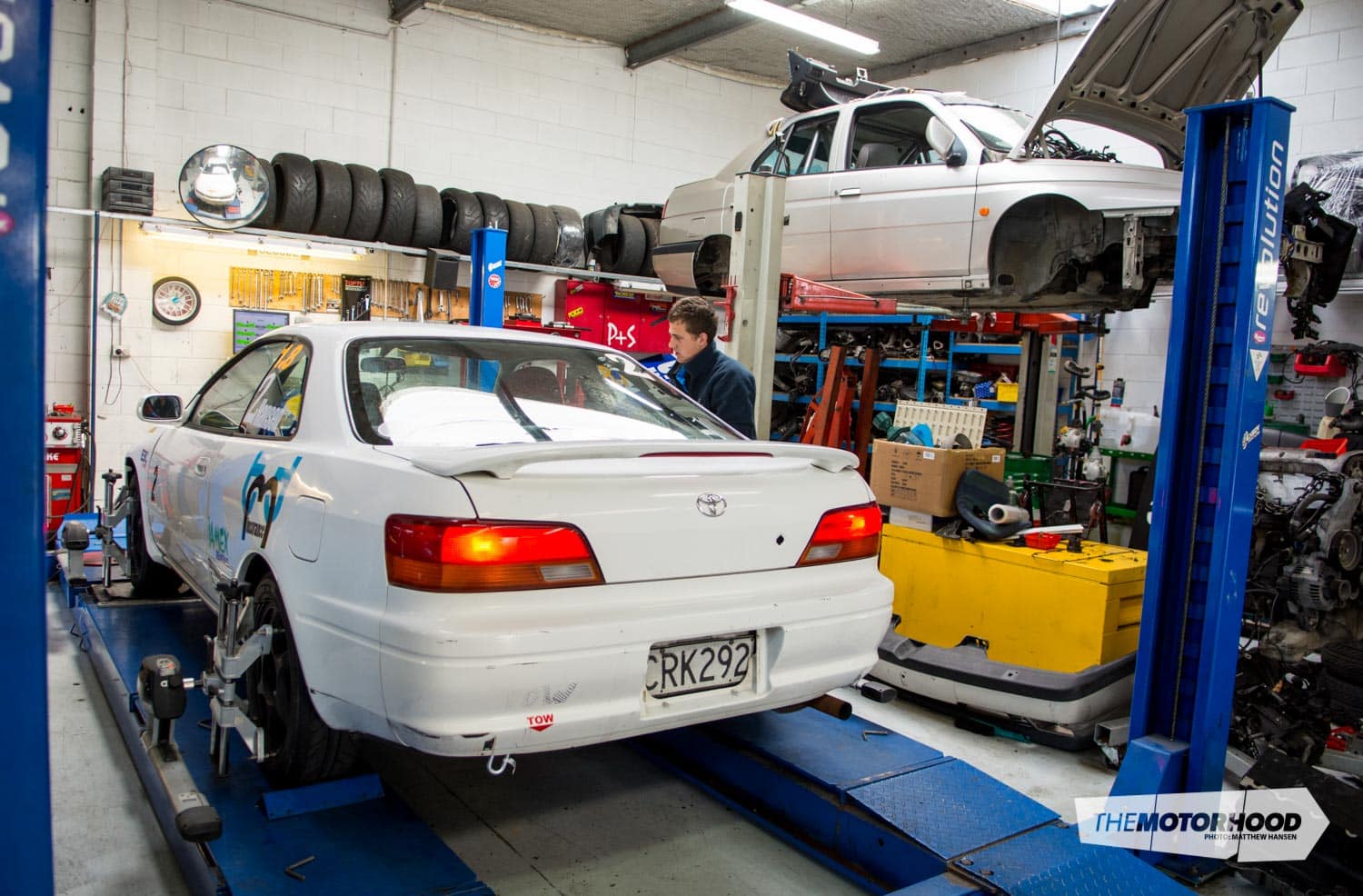
It’s the Friday prior to race day, and there are a few bits of admin to cover before I’d get to hit the track for round one of the 2015–’16 2KCup series. But motorsport is an entity that prides itself on its uncanny ability to torture and punish anyone who lets it in, and just about everything on this particular Friday was about to fall to pieces.
Job number one for the day is to get a wheel alignment for both the Classic Cover Insurance media car, as well as Mark Mallard’s new Levin — which had still not yet turned a wheel in anger. A simple enough process in theory, but it would also cause big delays. The original place that we’d booked at had elected to work on a selection of walk-ins, forcing us to find another place that’ll do it on short notice and in a hurry. But Mark’s onto it, and three minutes later we’ve arrived at P&S Autocentre just around the corner.
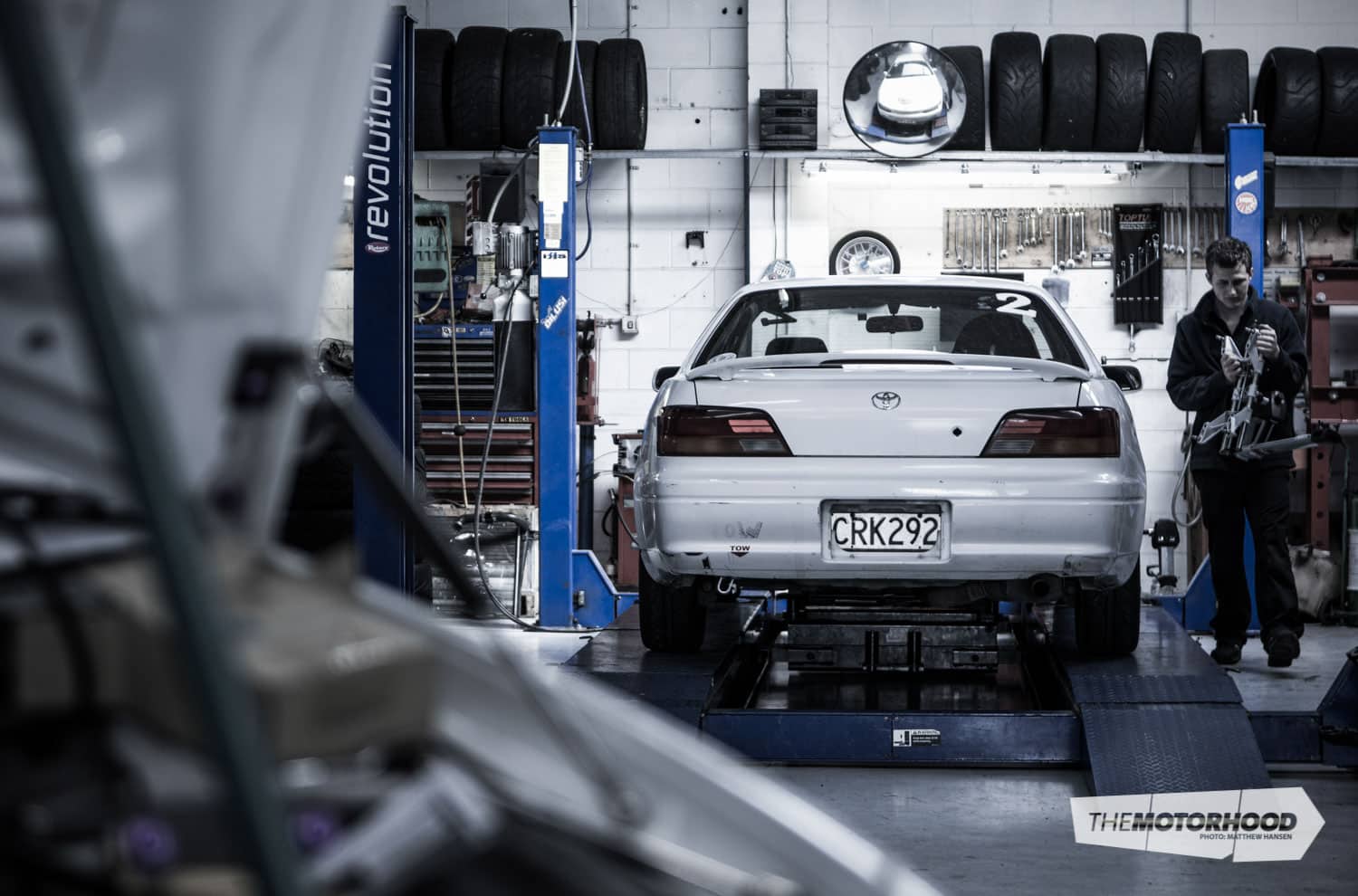
A quick alignment and check over, and my car’s back on the ground. However, Mark’s Levin would prove to be a different story. A small leak stemming from its gearbox drain was discovered early, triggering the P & S team to kick into gear to find a solution. Several quick trips to the nearby shops ensued, in the search for a substance that could mend the leak — each option seemingly insufficient.
I find myself repeatedly glancing at the time on my phone. I’m scheduled to have around four sessions in my car to get to grips with it, and the track, and this delay is eating into that. Sensing the situation, Mark gives me the word to kick clear, get to the track, and put down some laps before he arrives — and just like that I’m out like a shot.
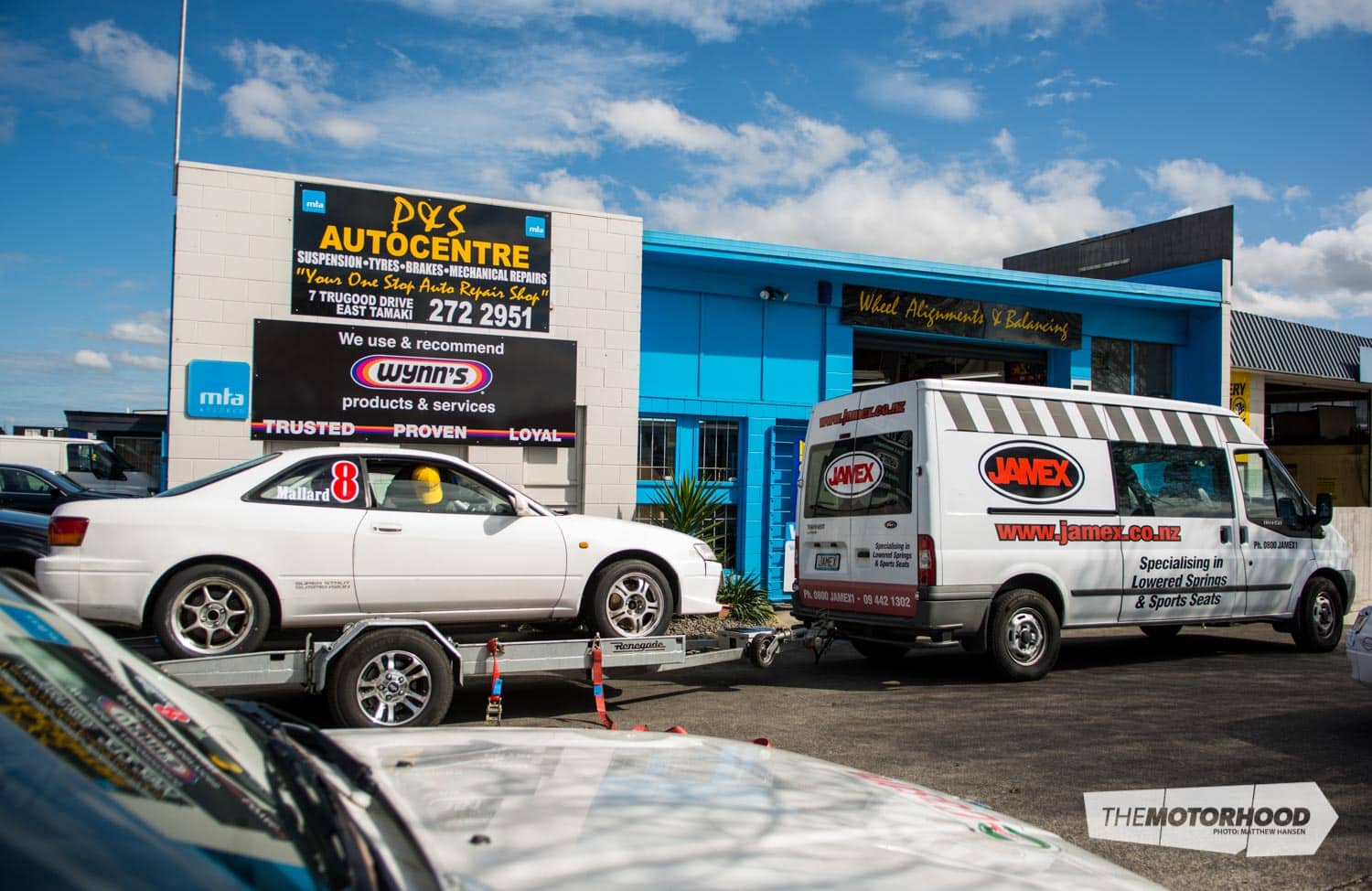
But upon my arrival I realize a fatal flaw — I don’t have a race suit. The previous night had seen Mark and I attempt to wedge my temple into one of his old race suits, to no avail. My contact, who was poised to assist with a suit for the day, was awol, which meant I was stuck there, standing next to a race car in the infield — a transponder in one hand, and a race licence in the other. I call Mark, and thankfully he’s only an hour away, instructing me to adjust the tyre pressures and clean all of the rubbish out of the car. If he arrives soon and the car is ready to roll, we might be able to squeeze in two sessions before sunset.
Sure enough, Mark arrives at around 2.30pm. Since I last saw him he’s managed to remedy his car as well as conjure a spare race suit out of nowhere. But there’s no time for questions.
“OK, I want you to hop in the passenger seat of my car for three laps, and I’ll show you the line I want you to take and point out some brake markers. Then we’ll come down pit lane, you can hop into your car and you can follow me for the rest of the session. We’ll just take it easy,” says Mark through his helmet.
“Yup, sounds good,” I respond, shaking like a leaf in a thunderstorm.
I’ve been in race cars before, but the initial hump of getting into a 2KCup car plays weird tricks on your mind. One of the sole elements of comfort you can lean on when you hop into most competition cars is that you can often assume that tens of thousands of dollars have been poured into the matter of safety — but that feeling of comfort is voided straight away in 2KCup, where even the most well-sorted entries on the grid utilize simple engineering, with many more cars foregoing cages altogether. While Mark’s Levin was caged, mine was not. And this scared me.
The marshall waves us through, there’s no backing out now.

The five minutes or so it takes for us to cover three opening laps comes and goes. I try as hard as I can to drink in every detail, but my mind’s too busy and distracted by the sound and the sights — not necessarily in fear of the moment, as Mark’s a more-than-capable driver, but more so in the fear that I’m mere minutes away from giving it a go myself. What if I spin? What if I crash? Goodness, what if I’m just really, really slow?
With my confidence running on empty, I extract myself from Mark’s Levin and get into mine. I feel like giving it a little pat and telling it that this is all going to be over soon. The sort of behaviour you’d expect from someone taking a cow to slaughter.
Did you know that over a lifetime, the average person will produce enough saliva to fill two swimming pools to the brim, and that over the same period, the average person will shed around 18kg of skin? The human body is capable of some pretty crazy shit, and it was at this moment that I discovered that mine was no different — because as soon as me and the Levin hit the pit exit, all the anxiety completely disappeared. It’s a hard sensation to attempt to explain, but as soon as I hit speed, the nerves were gone.
Was I any good? No, I was terrible. My brake markers were all over the place, and every lap undertaken had at least one significant error — whether that be the brake lock-ups at Pepsi hairpin, whacking the Levin into fourth instead of second gear on several occasions, or the chain of half spins I had put it through at turn one.
“You’ve got to brake harder at one, you’re trail braking way too much,” says Mark, in the tone of a person who fears for the future of their car. Turn one at Hampton Downs can trap you in a number of ways, and it was trapping me on every lap. In order to complete it competently you need to either be extremely conservative or extremely aggressive. I had spent the first session trying to be both — braking as late as my mind would allow, but holding the brake through the corner. Due to the camber of the right-hander, as well as all of the weight being on my left-front tyre, any trail braking would lead to snap oversteer.
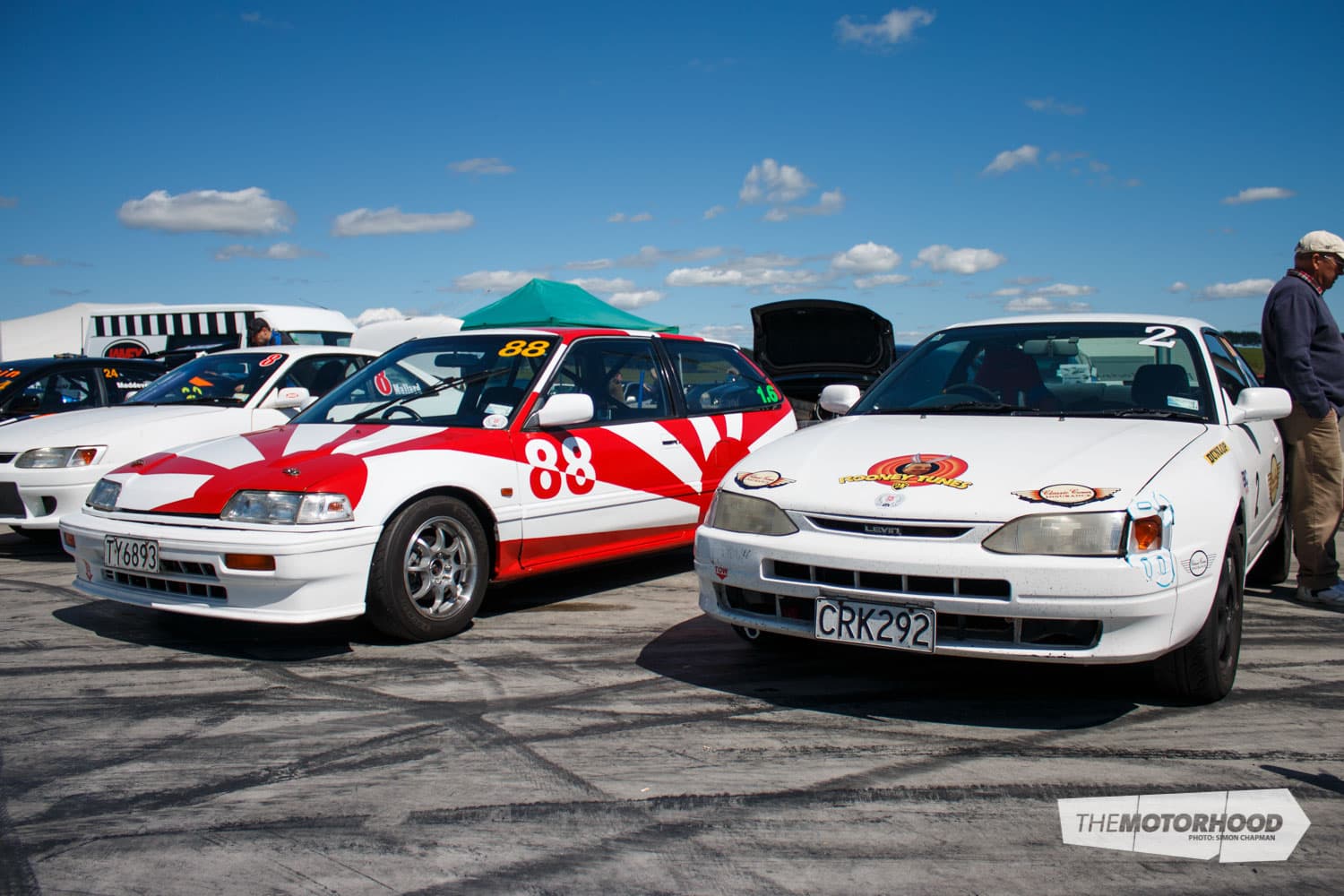
The second and final session of the day feels like a minor improvement — punctuated by yet another massive moment at turn one where I have a genuine half spin, the whites of my eyes visible from space as the inside concrete wall involuntarily wooshes through my vision. But by dabbing the throttle I manage to pull the front end of the car around, my antics inconveniently occurring while Mark sits on my tail, watching it all unfold.
As I roll into parc fermé, the nerves from before have been replaced with anger — anger at myself for making the same set of mistakes for a second time. The goal at the beginning of the day was to get me into a lap time around the 1min 28sec bracket, and I feel like I’m making way too many mistakes to be anywhere near that. As I mull the session over with Mark, him reiterating the points that he’d made seemingly minutes ago, my photographer and moral supporter Simon Chapman comes over.
“You did a 1:26.9!”
“I …. wait, really?”
Day two
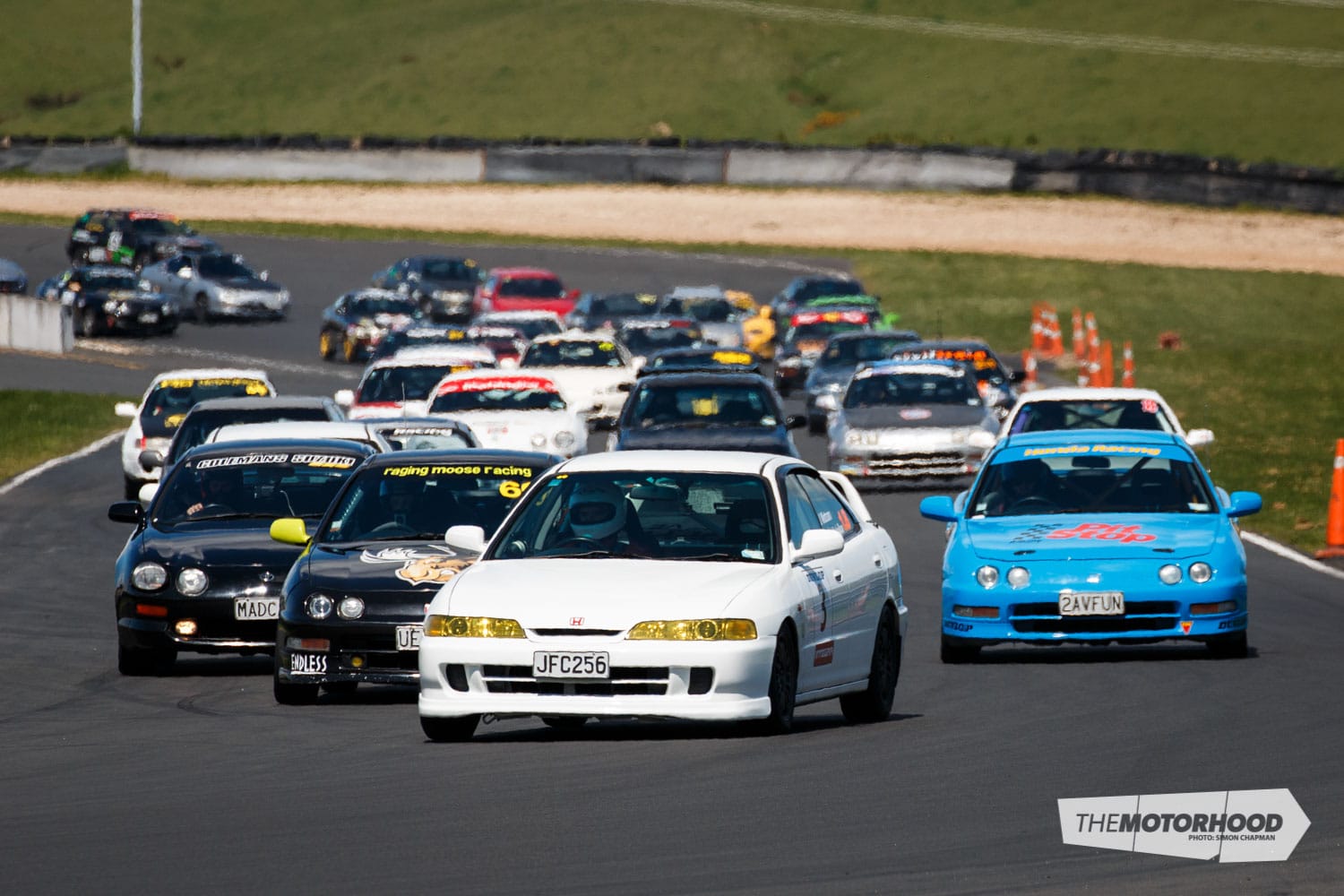
As soon as the Levin and I arrive at the circuit, the next problem that I’ve got to overcome hits me like a ton of bricks — there were 91 other cars entered. It’s such a ridiculously huge number. I don’t think I can even count to 91.
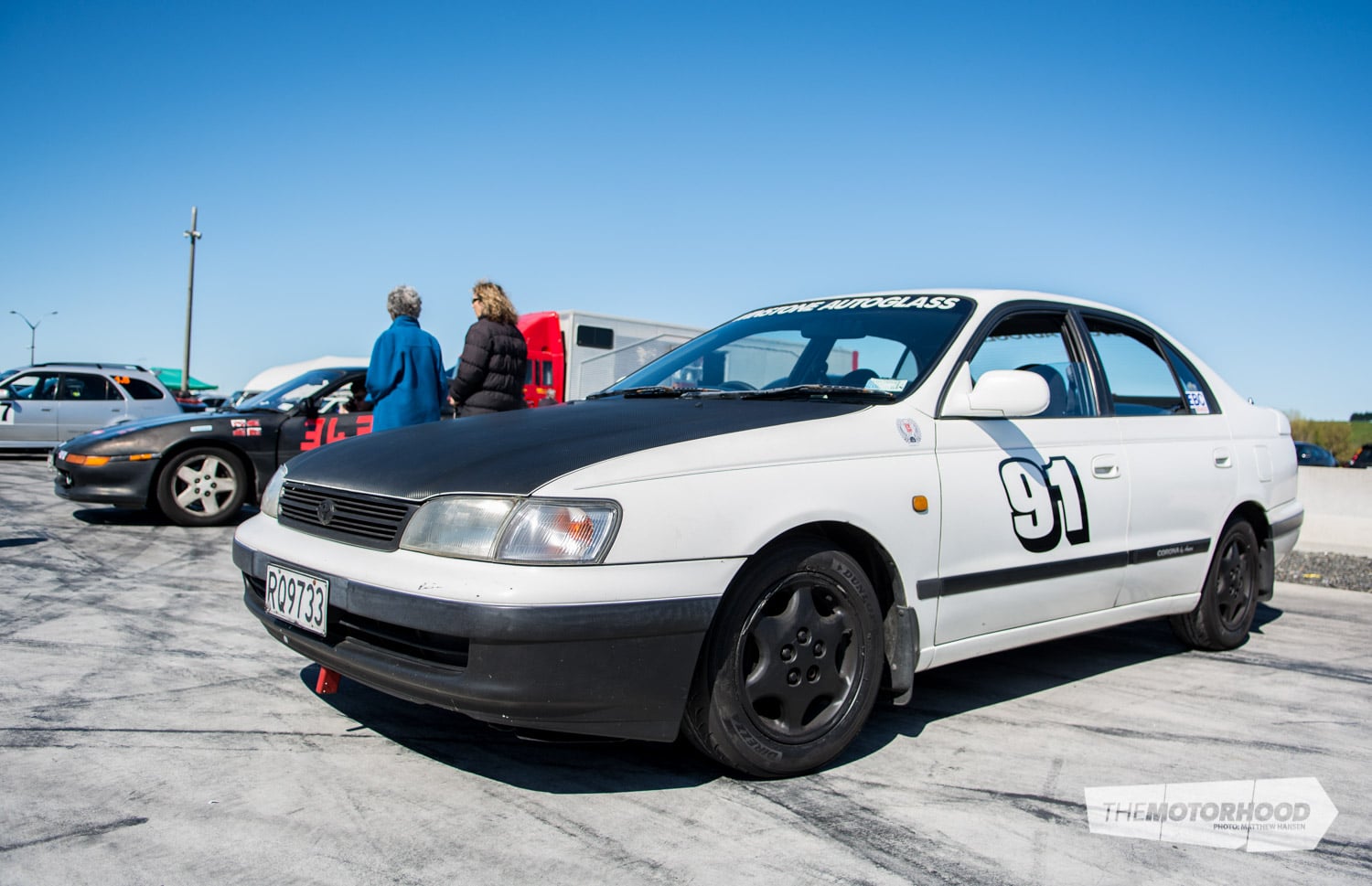
It’s easy to write off most of them as just token cheap junkers, I’d know because that’s effectively what I did when I wrote about the class a few months ago. But as the entry numbers have increased, so has the depth of cars. A pair of Autech Nissan Pulsars have rolled up, as well as just about every non–Type R iteration of Integra DC2. One car that made me smile was this Amon-edition Toyota Corona. A relic of New Zealand’s past life in car manufacturing having been produced in Toyota’s factory in Thames. The ‘Corona by Amon’ features suspension by Kiwi motorsport legend Chris Amon, as well as the option of either a carburetted 1.8-litre engine or a fuel-injected two-litre engine.
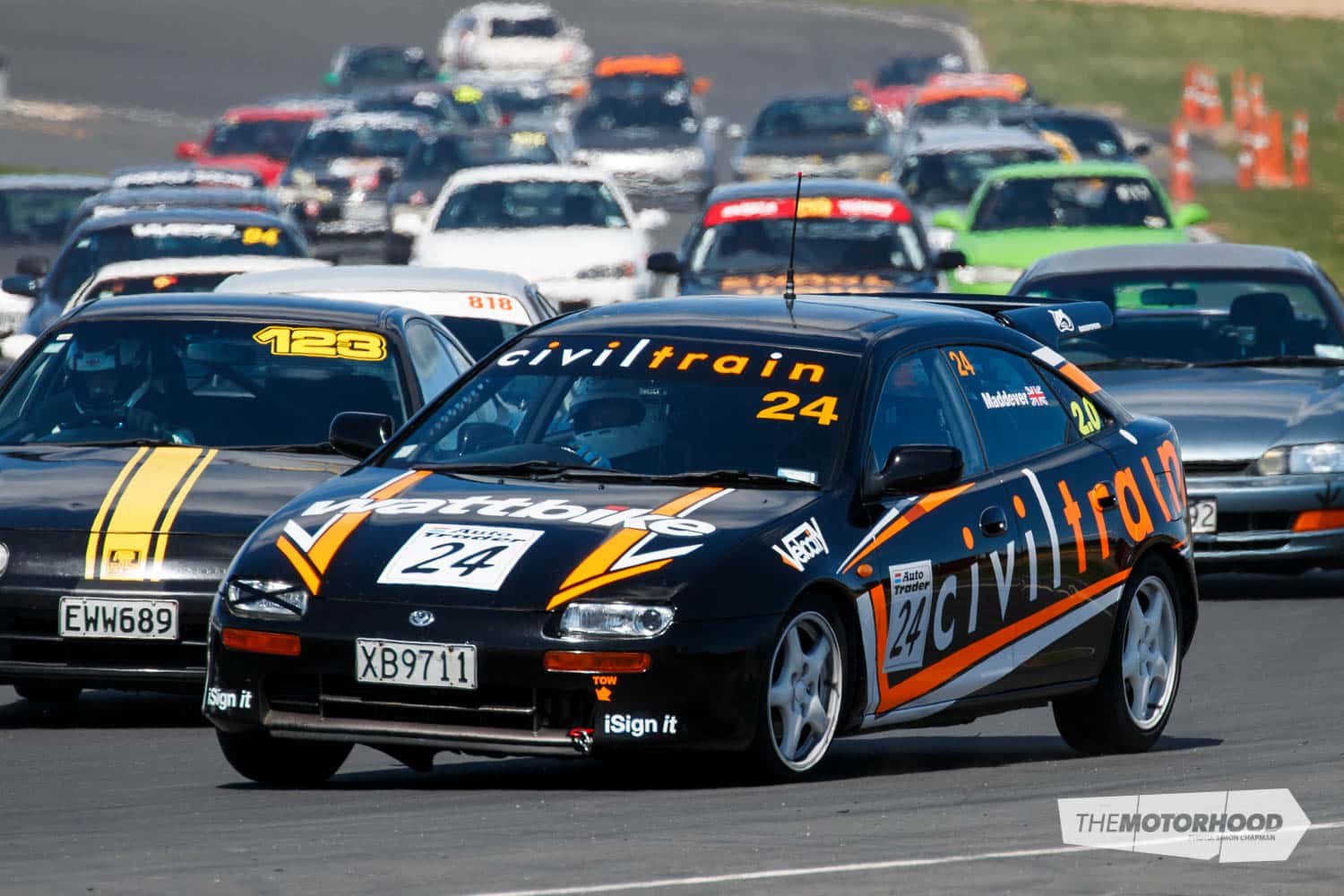
Then you get to the more well-prepared cars. It’s a sign of the success of the class that some of these vehicles roll off their trailers looking fit and ready to race in classes reaching a lot higher than 2KCup — cars like the newly liveried Civiltrain V6 Mazda Lantis, owned and peddled by George Maddever. Bonus points to him for the British Touring Car Championship–style racing number. As I duct tape my Classic Cover Insurance logos on the car (they’re magnetized, but will likely come off during race pace), I struggle to guess where on earth we’ll fit into this order.
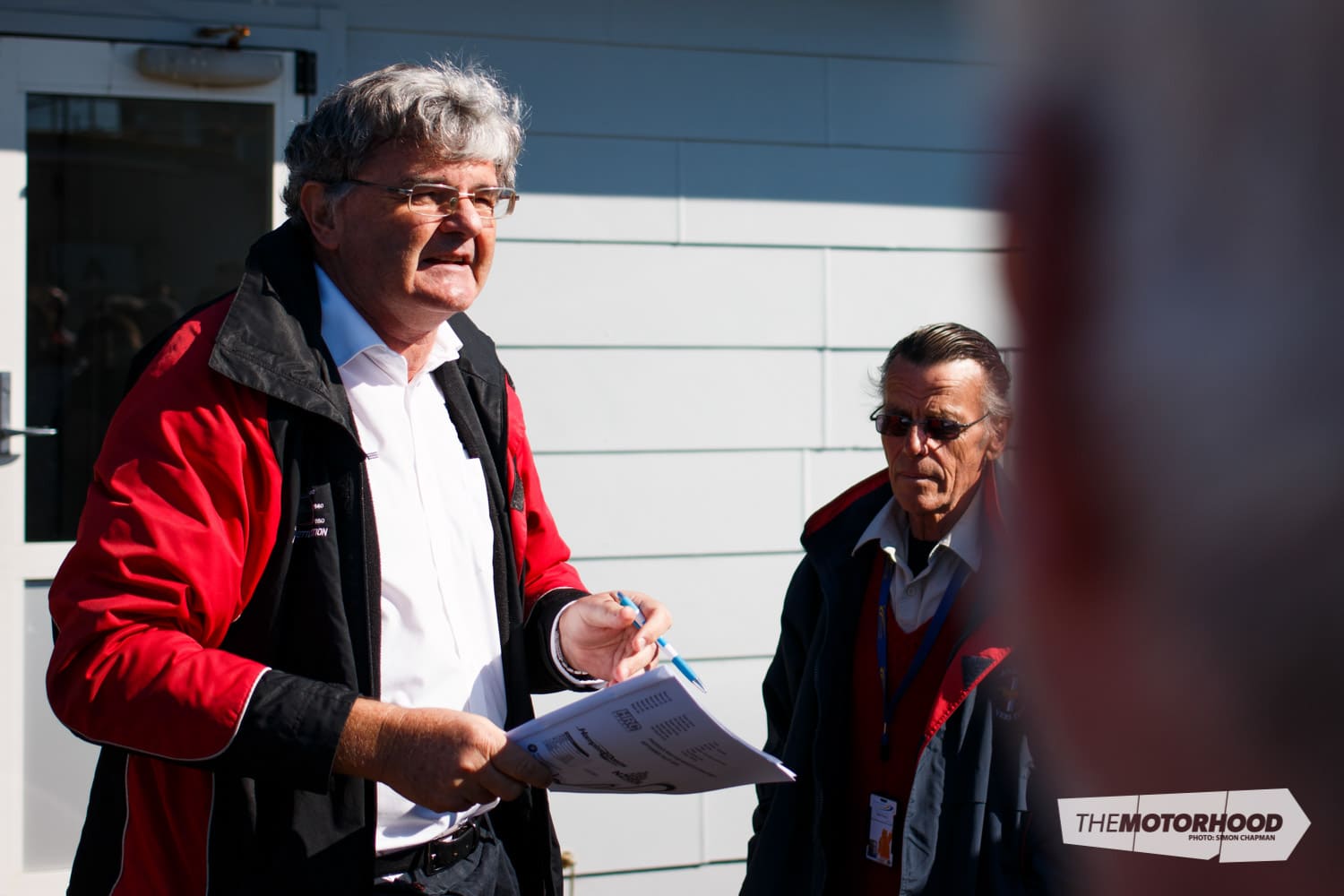
Driver’s briefing, and a mosh pit of drivers assemble in front of Chris Watson, Mark Mallard, and a few other officials — most of which are drivers in the class themselves. We learn of the day’s format, with the 92-car entry list to be divided into a fast half and a slow half, with two 33-minute races for each grouping. First-timers get their own special briefing at the end, where some of the key points from the race-licence examination I had sat earlier in the week were repeated. Having sorted out a race suit from the The Motorsport Club, I was ready … ish.
The day would dive straight into qualifying, and once again my nerves had subsided as soon as I got onto the track, my head now focusing on getting enough space on the track to push for the fastest time. Mark’s parting shot of “don’t be a hero” rings through my psyche, but I push it aside. Having spent the night digging through YouTube for Hampton Downs 2KCup clips to study, my confidence had improved. As I warm my tyres on my out lap, I spot a generous opening in the traffic a few cars ahead, promptly nabbing it just in time for a hot run through the final corner and onto the main straight. Time to drive.

Third gear, strike the rev limiter before plunging into fourth. Crest the hill and touch the 180kph marker on the speedo. Smash down to third as you hit the start-line marshall point, simultaneously heaving on the anchors. Be aggressive. Balance the car through one, aiming for the second set of ripple strips inches away from the inside wall before letting the throttle pedal ease the car towards the apron on the outside. Use all the road. Leave it in third before going down to second at the 200-metre board. Late apex, aim for the concrete mouldings on the inside then short shift to third before cutting the ripple strip on the left to arrest the car from wheelspin as you power over the turn-three hill at full beans. Use all the apron on the right before cutting across to the traditional line for Pepsi on the left. Back to second as the 4A-GE chirps in ecstasy. Check the mirrors, cut across to glance the inside apex before again monstering the apron on exit. Avoid the cones. Into third, then downshifting to second as you peak the hill — not afterwards as the mind’s still not quite ready. Use an ultra-wide line before cutting left for the carousel at the last moment. Resist the temptation to floor it, instead feed the power on in order to not cause wheelspin — good. Into third on the small back straight, check the mirrors to see if there’s anyone wanting to get by. Momentarily touch the rev limiter before jabbing the brakes for the Metalman double apex. Hug the inside line, feed the power until you find your right pedal on the floor, use the apron. Sing it to 8000rpm again before shoving it into fourth. Cross the line.
“You did a 1:27.2. Good job. Should put you near the front of the second group.”
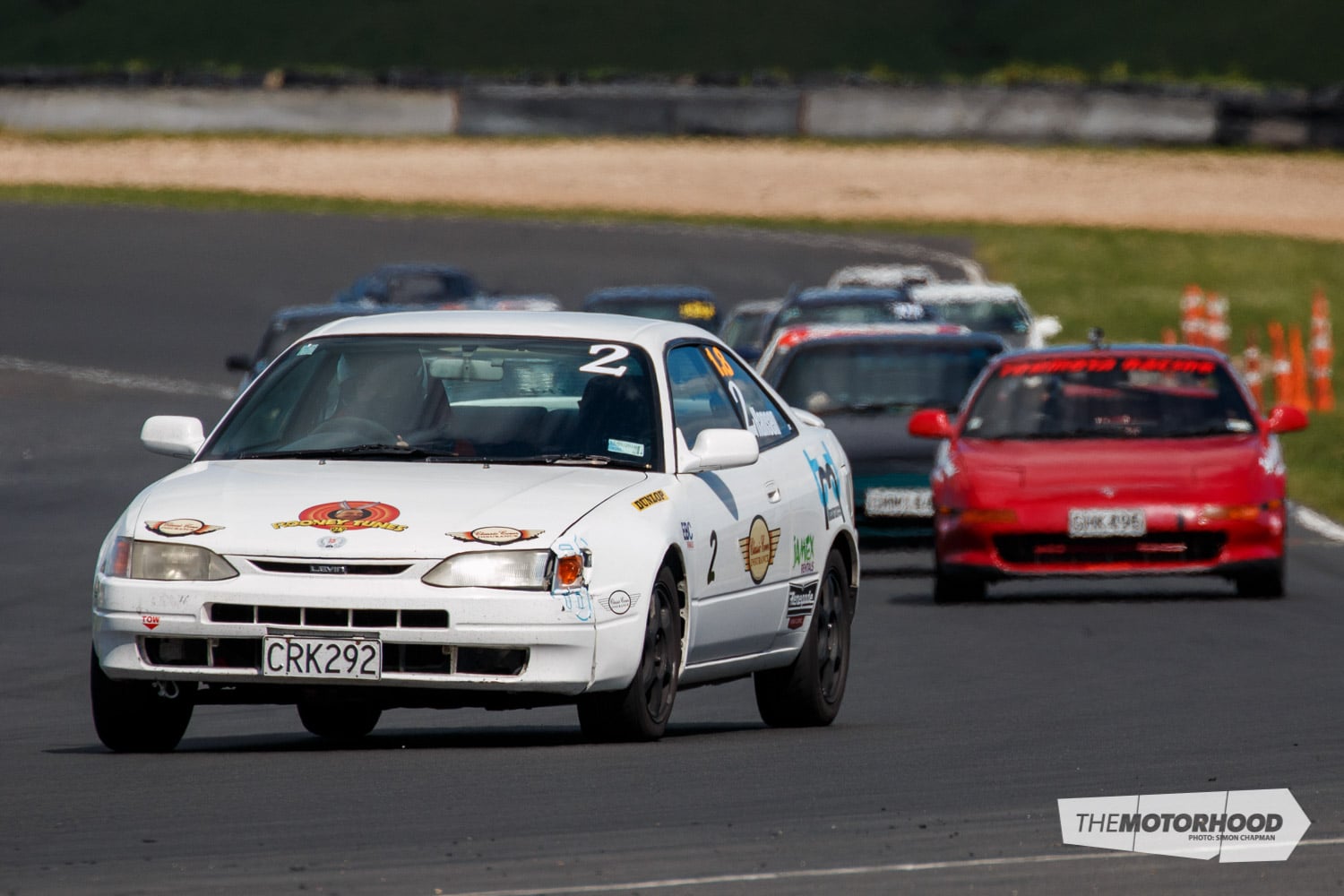
The time is good enough for around 49th out of the 91 cars, qualifying me in fourth in the second grid. Visiting the timing hut, I see that the leading cars are doing 24s, but I’m stoked with where I am — nestled among drivers who have done this numerous times.
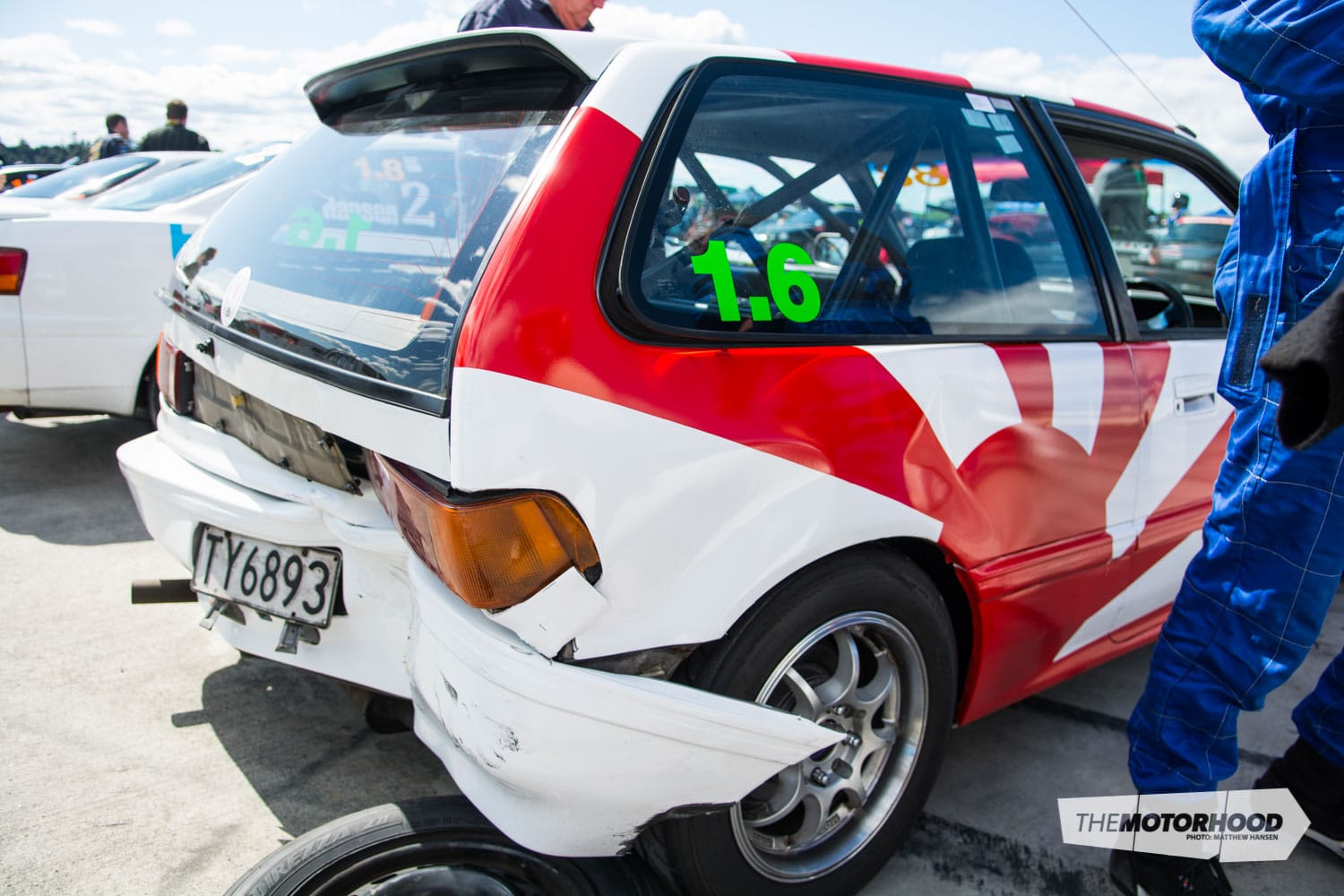
The quick guys race first, and it’s a good opportunity to spectate and see how they all navigate those opening few corners. As you can expect, the logistics of getting 46 closely packed cars through turn one isn’t exactly easy, but the talent within the category is functional and the race flies by with limited incidents. Two of the few cars claimed in the race are the Civiltrain Lantis and innuendo powerhouse Kent Dalziell and his ‘rising sun’ Civic EF — one catapulting into the other after Kent had battled fuel-surge issues. A few brief apologies after the race, and they’re back into it. My turn.
The worst thing is sitting on the dummy grid and waiting. A kart from the previous session has dropped oil at the pit entry, causing further delays. But the mess is cleaned up quickly and the 40-something secondary grid is out on track warming their tyres, with me near the pointy end. Taking my slot, I keep an eye on the mirrors for the final few cars to grid up. This is it, I’m about to make my racing debut.
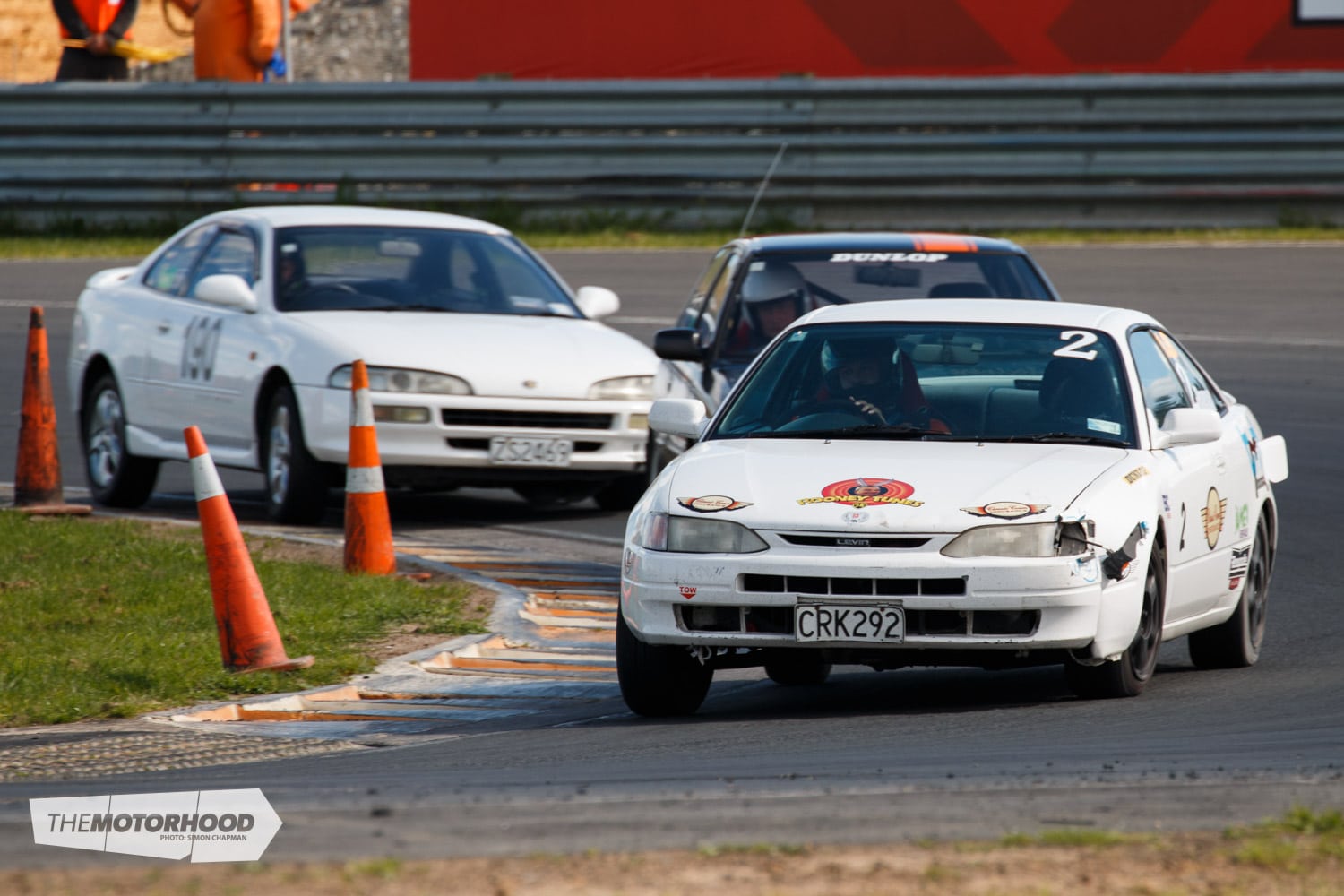
The red lights illuminate one by one, then disappear and my right foot goes to the floor. But my left foot lags behind in letting go of the clutch, and three cars file inside me as the swarm approaches turn one. I spot an opportunity to get them both on the back straight, to get back to fourth, by threading the needle and driving down the middle of two cars, so I go for it, getting back to fourth by the end of the lap. Catching up to third by the end of lap two, I dive inside him — only to confront my weekend-long fear of spinning in front of the pack at turn one moments later.
I feel the back of the car step out a little, then a little more, before realizing that no amount of opposite lock will save it. Hoping to straighten the car for a quick recovery, I quickly turn to the right — catching a view of the dozens of cars that had been behind me funnelling around my near-stationary Levin. In a panic I pump the throttle, not yet realizing that I’d stalled. Cars still whiz past me on either side as I fumble the car keys in the ignition, bracing my body for contact. Finally awakened, I dump the clutch and get back into the race — now sitting around 10th or 11th and shaken beyond words.
View fullsize

View fullsize

While the spin had denied me a podium (and lightened my bowels a touch), it had given me the opportunity to race around cars slower than me. And before I knew it I was back in a fighting fifth, having claimed the fifth-fastest lap of the race along the way. Over the final laps I would destroy four cones on the outside of turn one after using too much track (decimating an indicator, and somehow managing to plant a dent on the roof), then I’d slip on oil — once again at turn one — and grab the wall with the right-rear fender, which would relegate me to sixth.
It was my minor excursion with the cones that had done the most damage, buckling the fender, taking out an indicator, and bending a brace under the bumper. Some tape and some TLC from the car’s mechanic, Neil, and it was back in business for race two — which was going to be something quite different. It would be a reverse-grid race, with ten-second intervals between each group of cars. I would be starting from 34th, 40 seconds behind the first car. But if I’d learned anything in the opener, it was that the trusty little Levin was actually a very competitive package — particularly when it came to blasting people in a straight line. A result somewhere near the top five, and I’d be happy.

If anything, the wait on the front straight was even worse than the wait on the dummy grid, seeing 30-odd cars and thinking, “shit, how can this be possible?”. It didn’t help my cause that the race had been reduced to 25 minutes in length either, eight minutes shorter than scheduled. But after race one, I’d decided that I wanted to do well. The last thing I wanted to do was just make up numbers. Eventually it’s my group’s turn to go. From here on it’s all about picking your moments, picking chinks in other people’s defences, and being as efficiently aggressive as possible. No sitting on someone’s bumper for laps on end, just catch and pass.
It’s evident that the long and very wide front straight is my best bet for passing numerous cars in a hurry. After an experiment on one of the opening laps sees me pick off four cars in one swoop, I decide that the final corner is to be the one I place the most focus on. Hurtling through the field I start to see a few of the more established cars. I pass the Amon Corona, I pass the impressive little Fiat Bravo, thinking to myself that I must be approaching the top ten or so. But for every clump of cars I pass, another seems to pop up on the horizon.
That’s at least until I reach a Peugeot 106, an old BMW E30, and an Integra engaged in their own little battle. With two of them blocking the circuit during a competitive run out of the final corner, I naturally do what any ego-inflated rookie would do and take to the grass to get around them. Planting my left wheels on the grass and my foot to the floor, I grab the trio in the space of a few seconds.
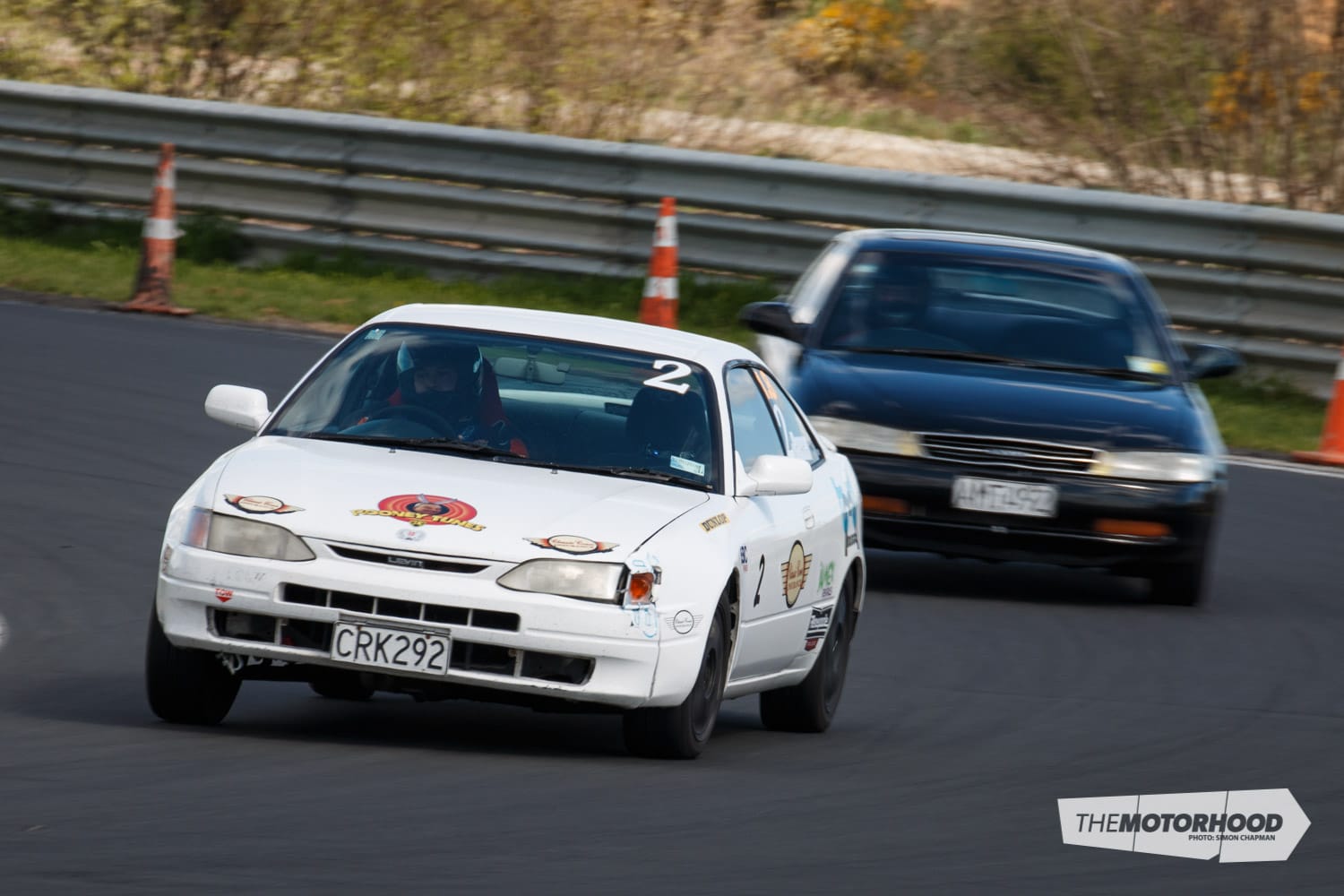
Having dispatched them, I get a brief look at the remaining handful of cars I’ve got to grab. All of them are spaced out evenly, and getting bigger and bigger in my vision with every corner. As the low sun sets in the background, most of them simply let me through. I count them down in my head, figuring that I should just about be at the front.
I spot a red Toyota MR2, less willing to be courteous than the rest, that’s able to maintain a margin. I creep closer, but time ticks down and eventually runs out. At the end of 25 minutes, I’ve come from 34th to second. I’m exhausted, relieved, but mainly just buzzing. To pedastal a concept like motorsport for 20 years, then to go out and do it, making yourself proud while doing so, is an incredible sensation.
Rolling into our pit, a number of friends from The Motorsport Club give their congratulations, with Mark stepping over to do the same. For that moment, with people surrounding you, you feel on top of the world. And I can’t thank the 2KCup series enough for giving me a taste of that.
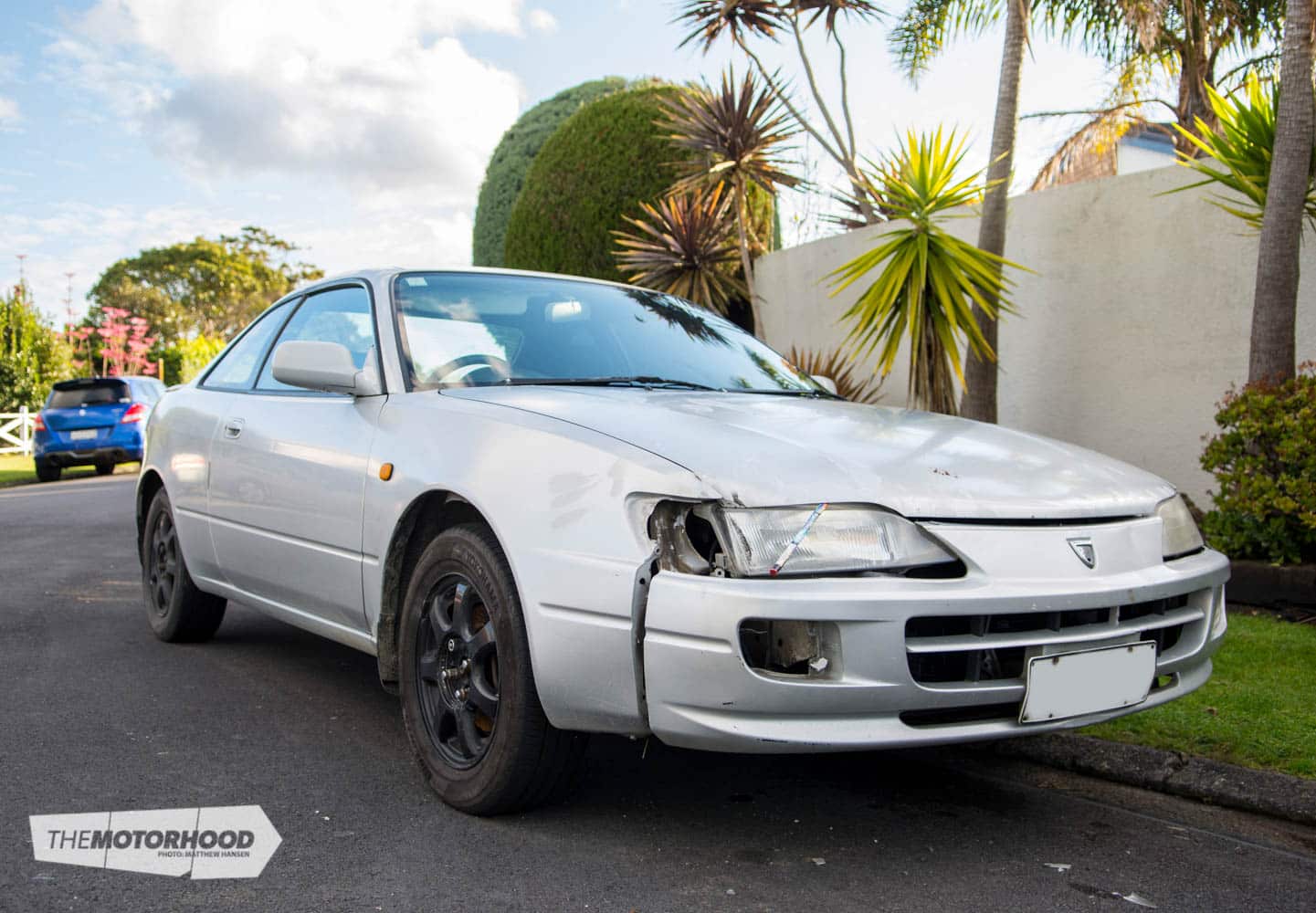
This is where this article will end, but it’s certainly not where the story will end. Having given back the Classic Cover Insurance Levin, where it will now be handed over to the next lucky recipient of its magical powers, I’ve driven across Auckland on a late afternoon to find another Levin. This one was in an accident, but remains in reasonable order. Having made a number of calls, texts, and Facebook messages over the course of the day, I’ve decided that I want to buy it. Will I be successful? I’m not sure, but it’s no biggie if I’m not. I’ll keep looking, and I’ll definitely find something else.
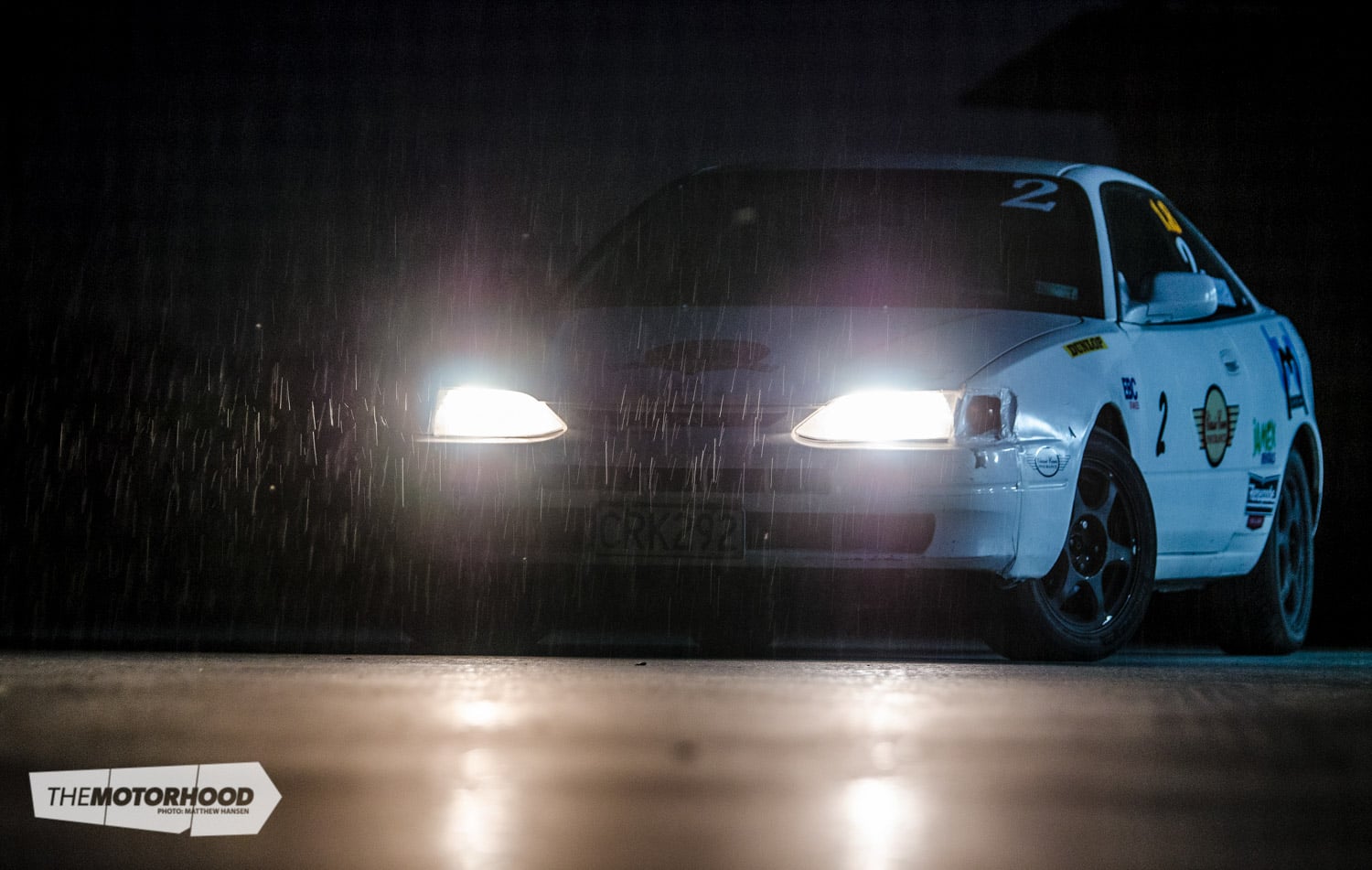
What I do know is that this won’t be a one-off. I’ve caught the bug, and I won’t let go. The next tilt must be faster, louder, and I have to be better. I absolutely need to do it again.
Photos: Robert Hogg / Media 77, Simon Chapman
View fullsize
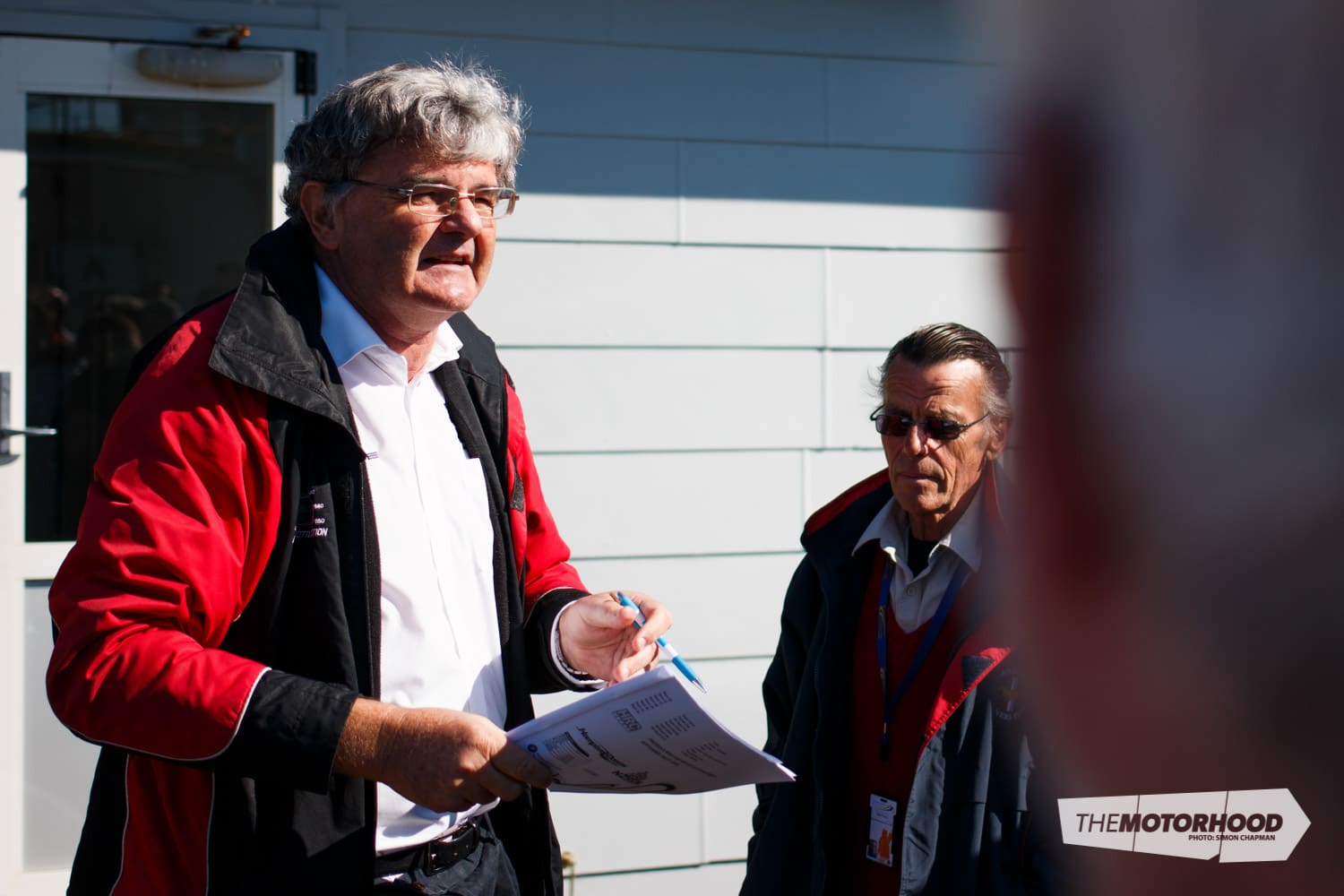
View fullsize
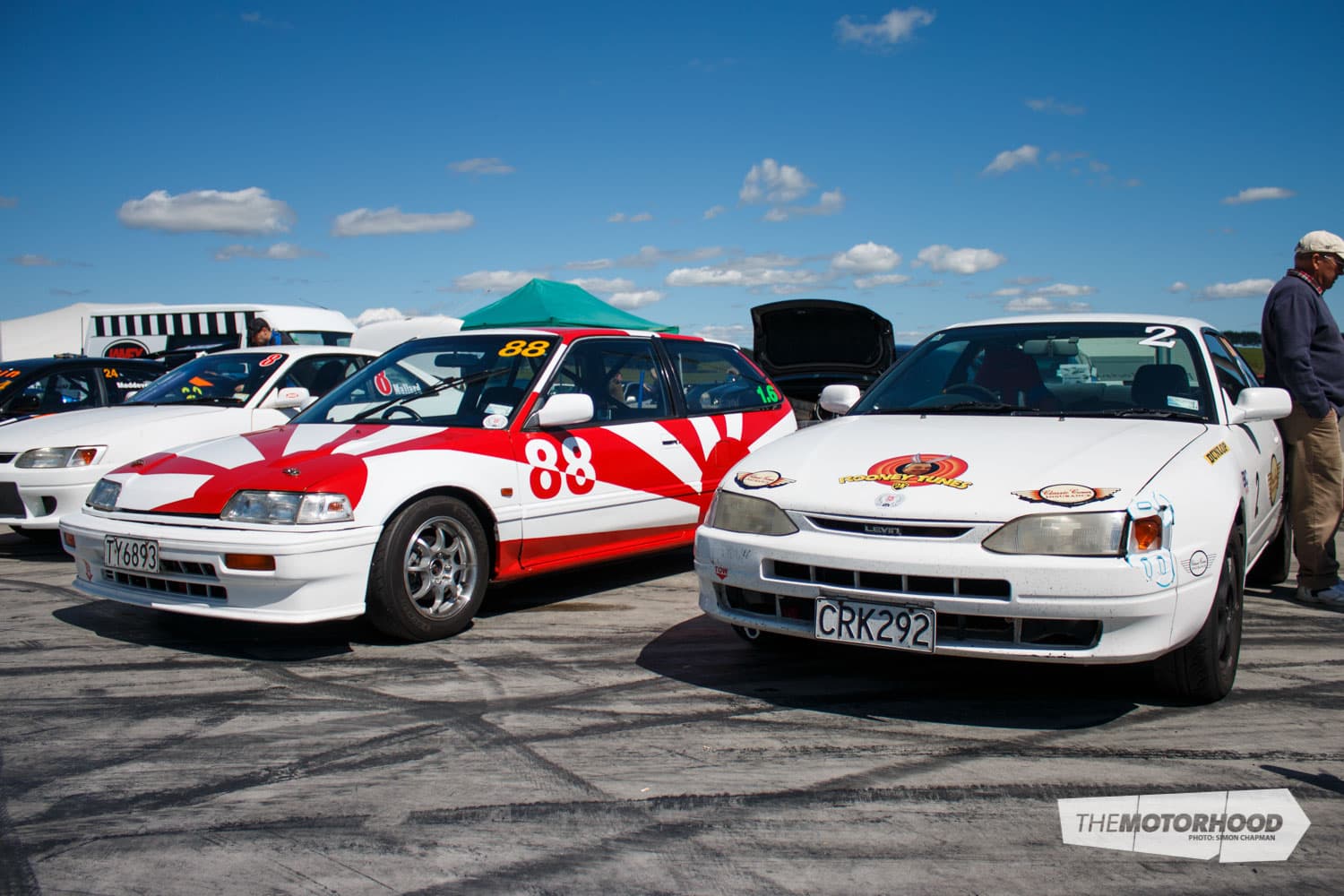
View fullsize
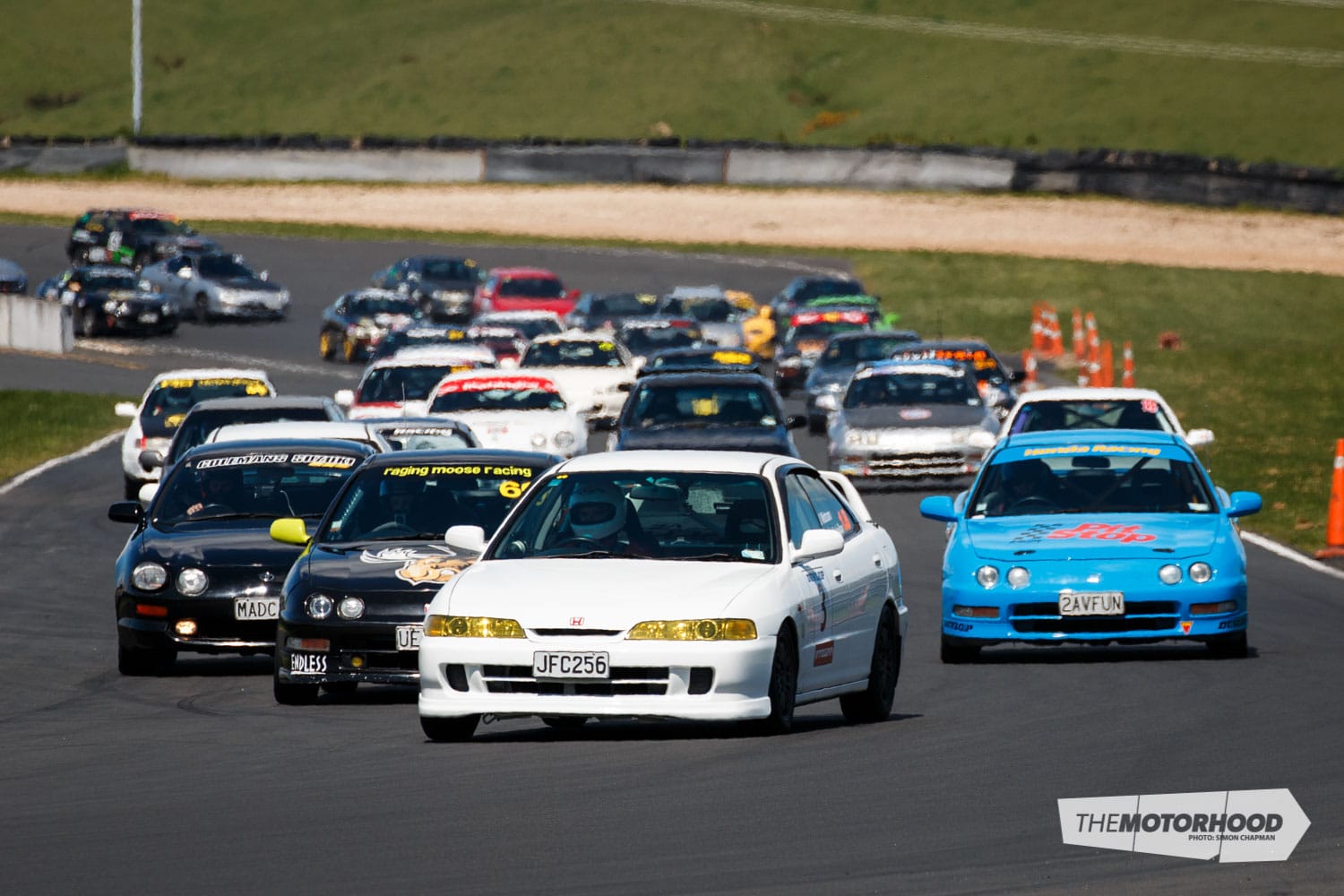
View fullsize
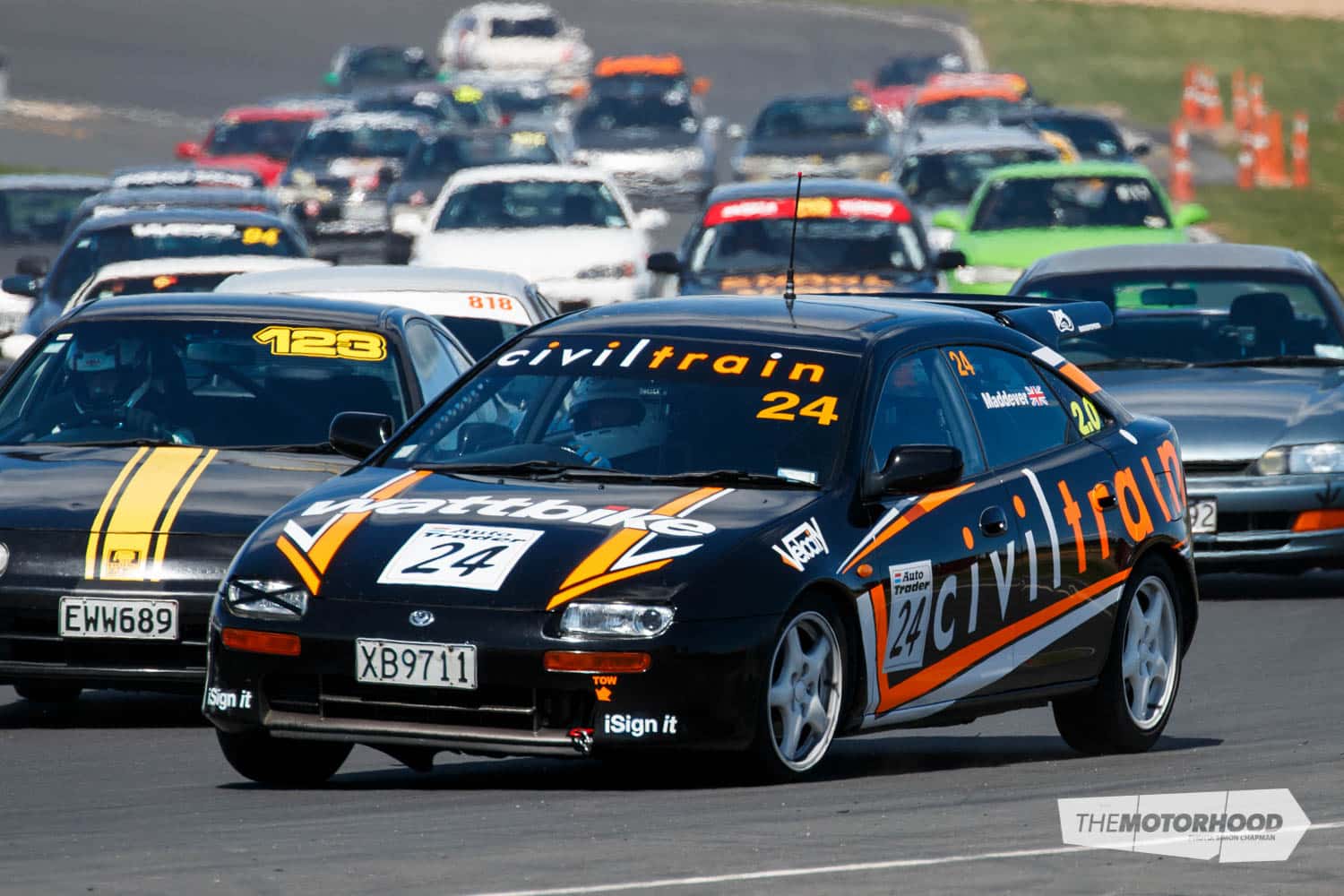
View fullsize
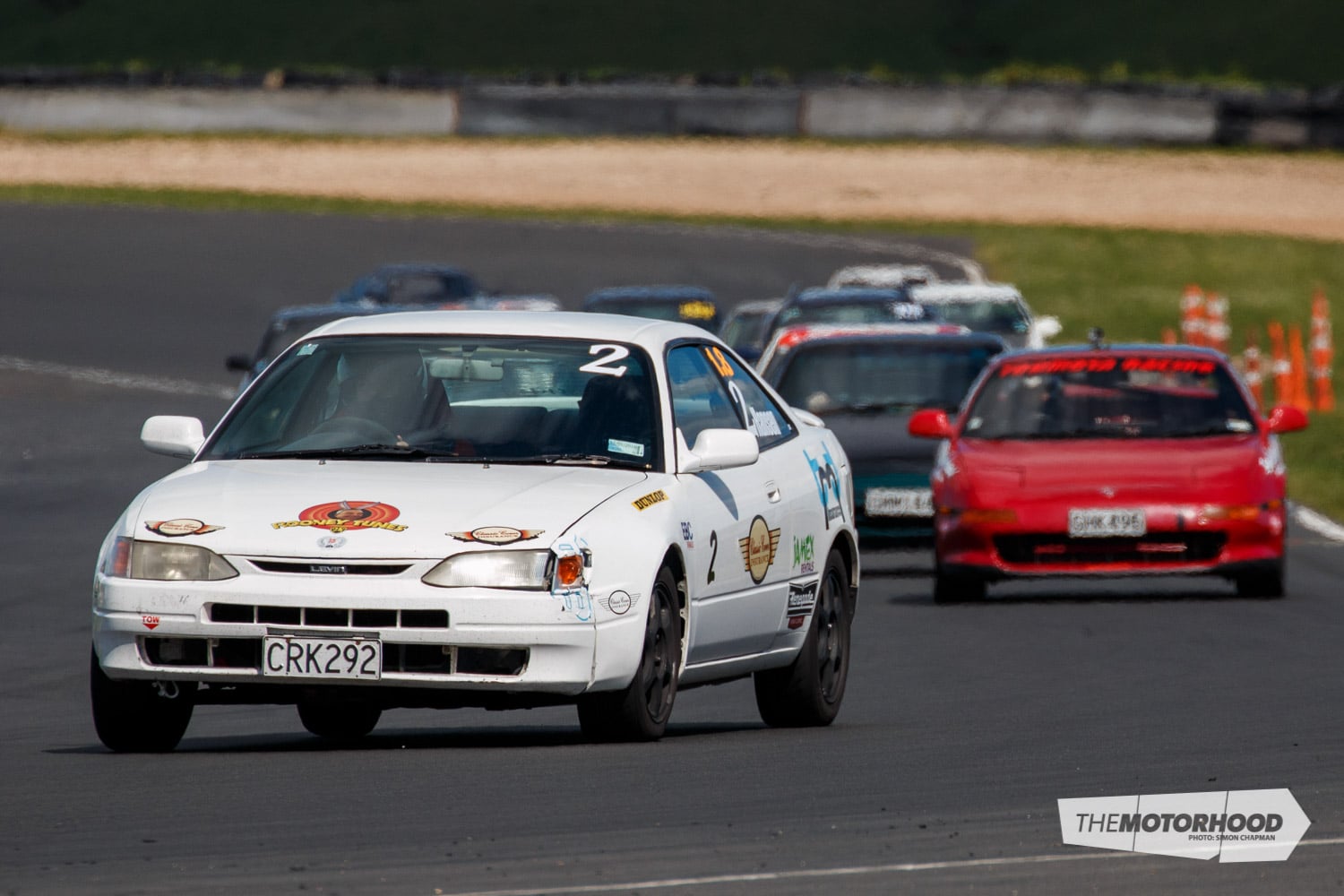
View fullsize
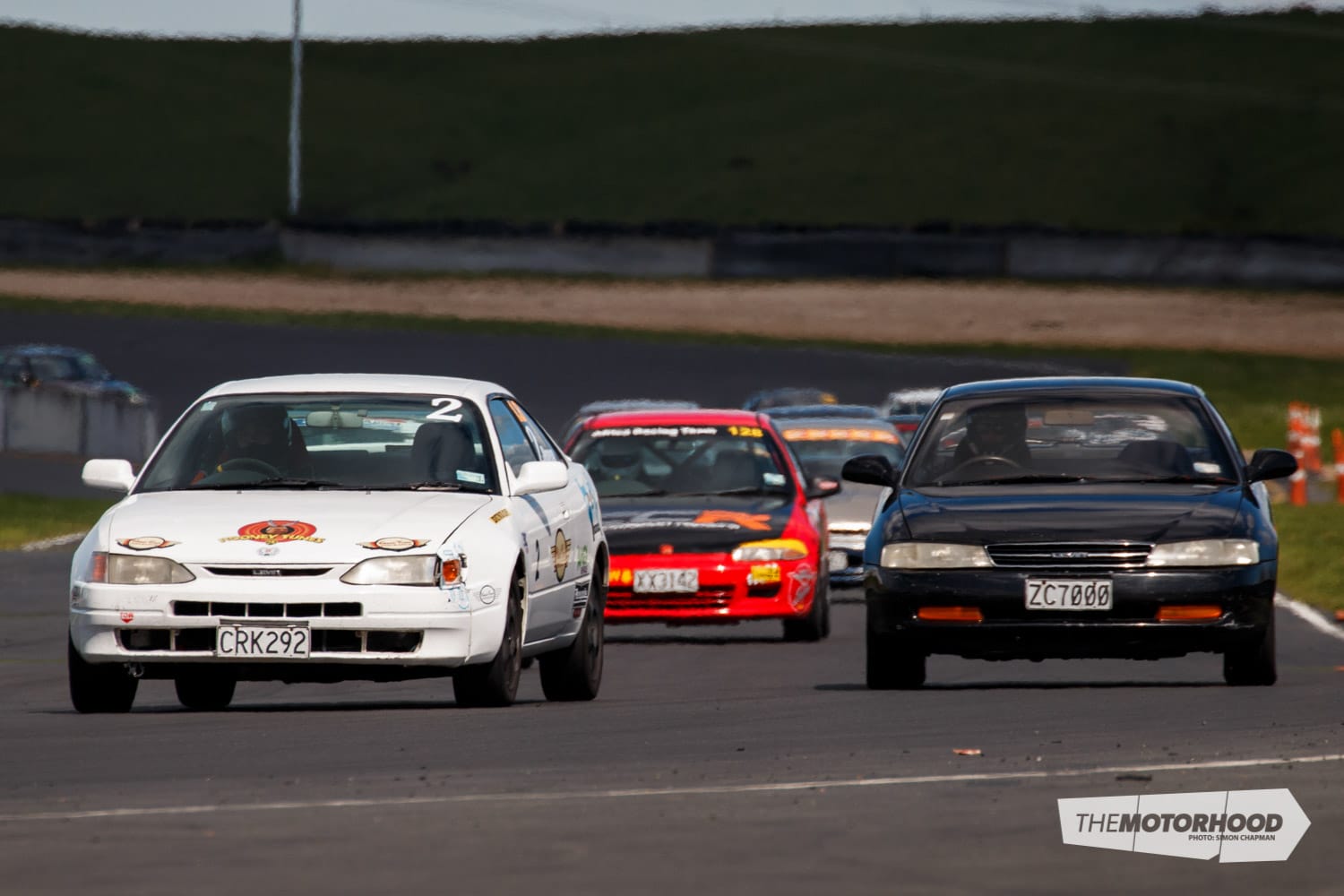
View fullsize
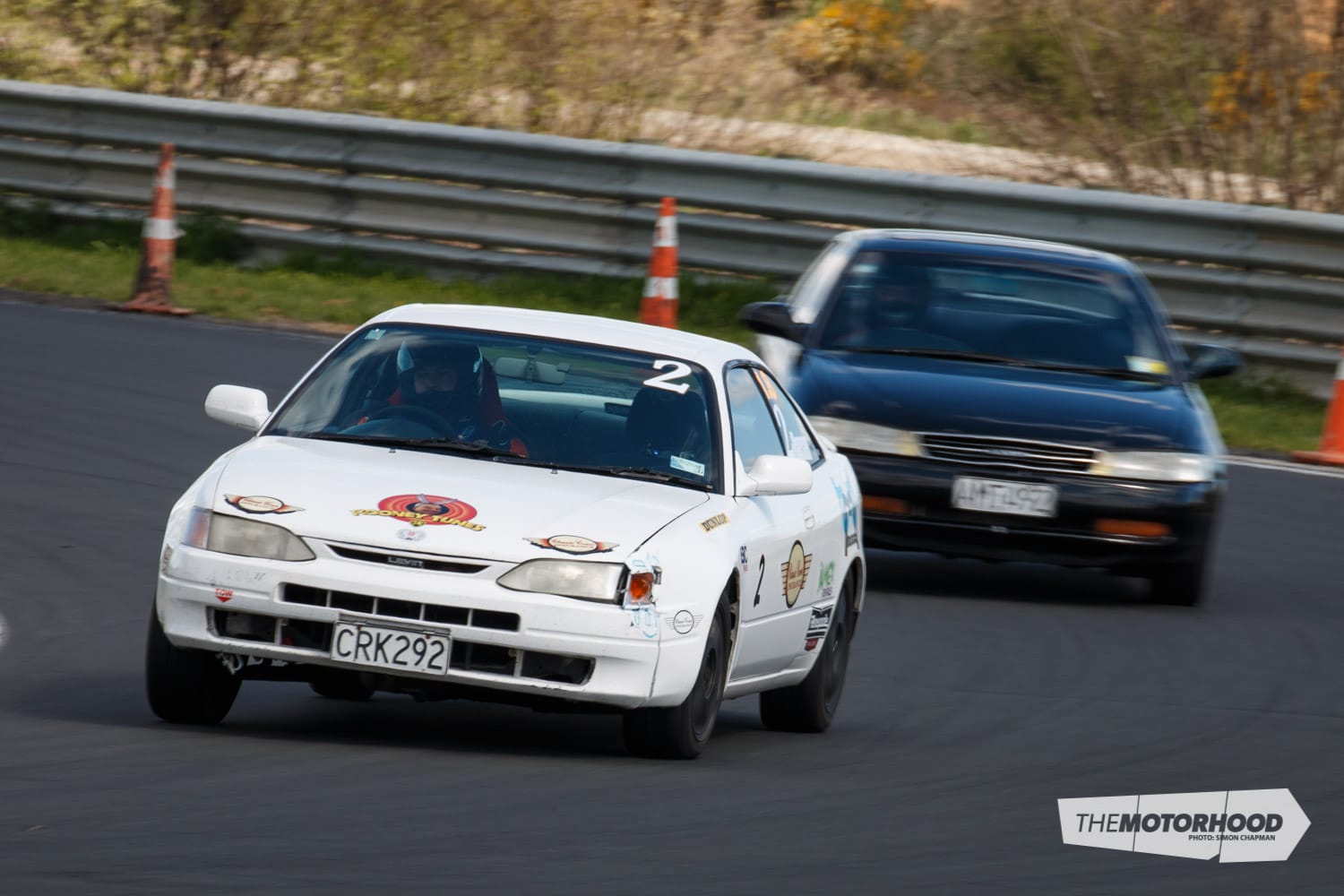
View fullsize
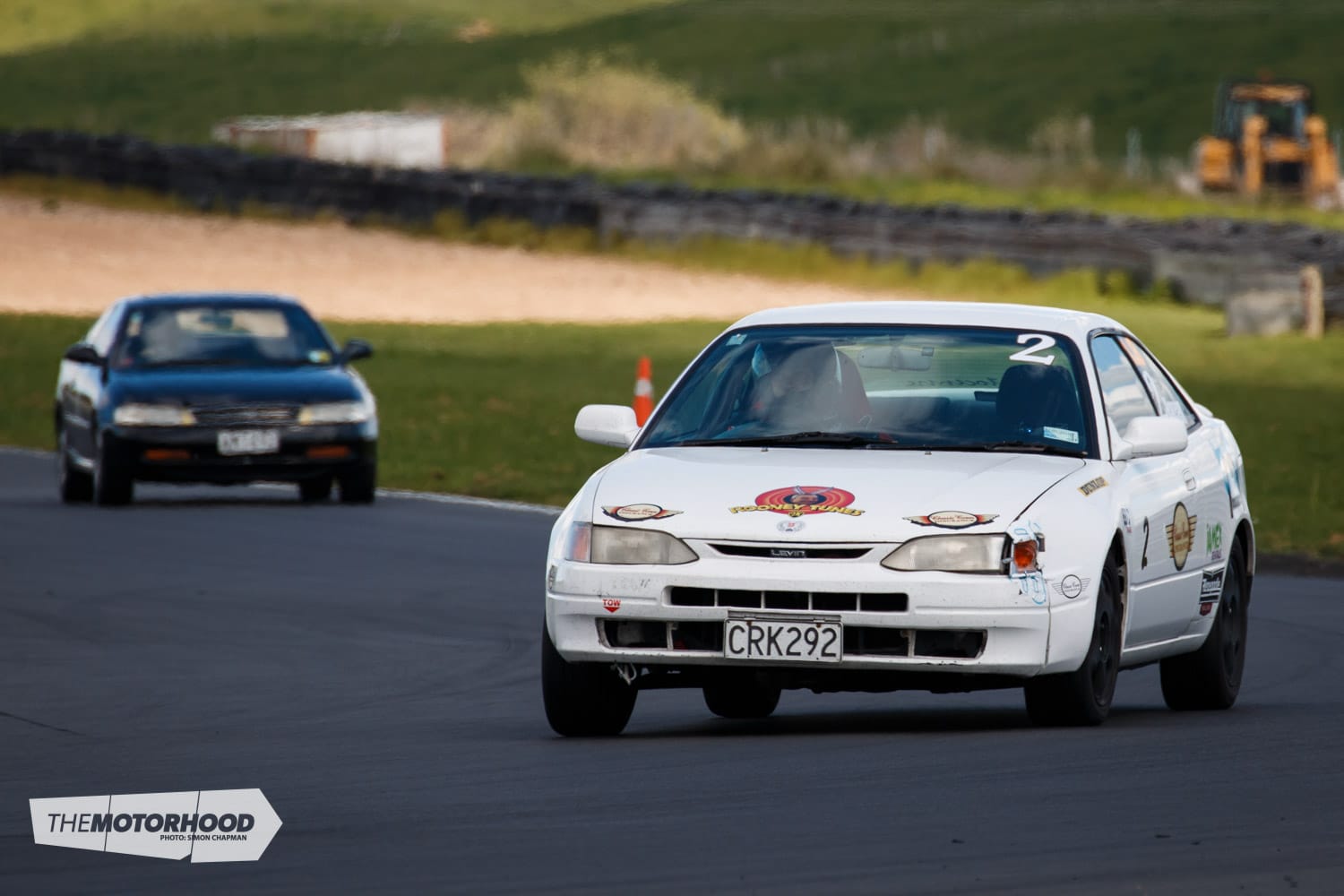
View fullsize

View fullsize
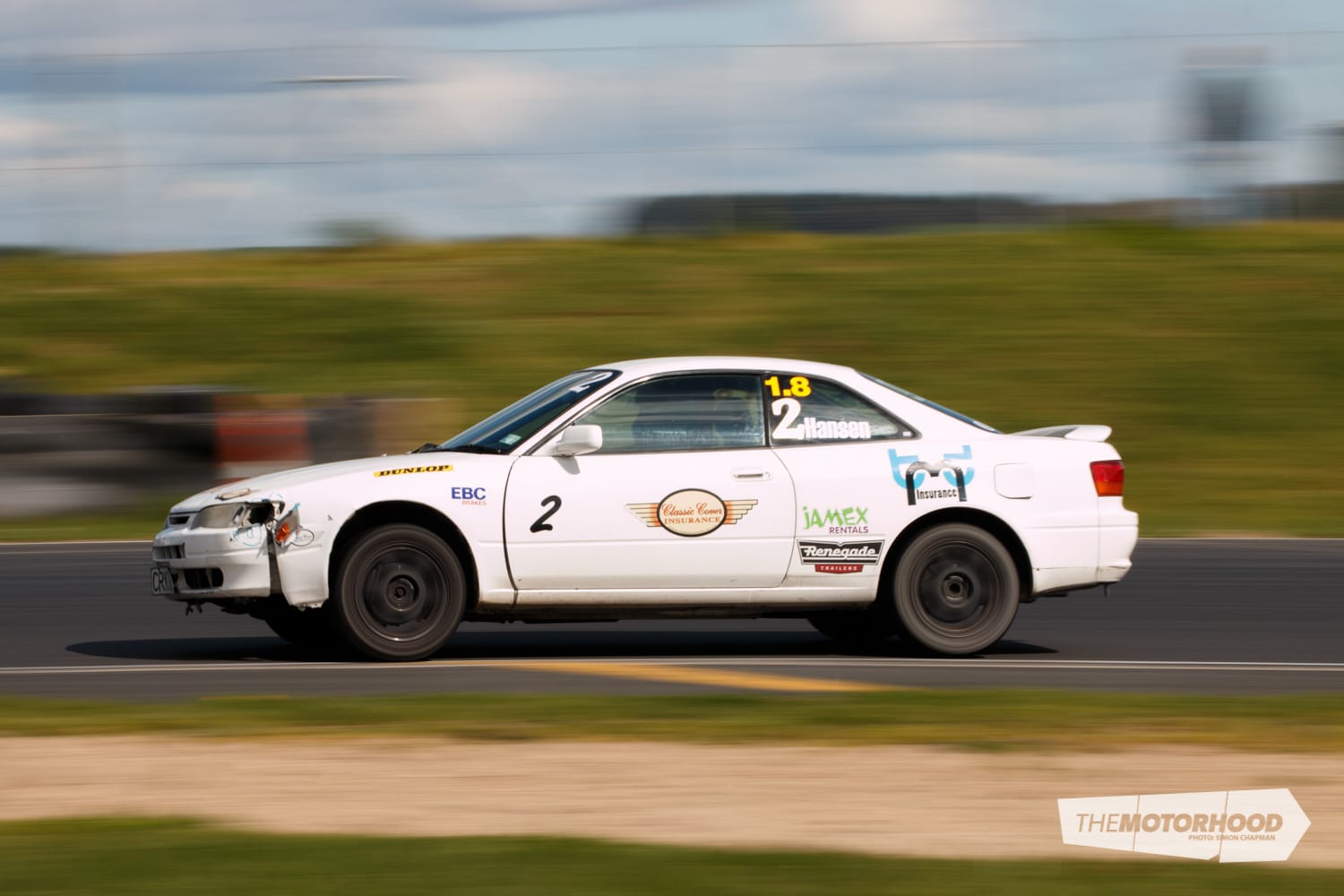
View fullsize
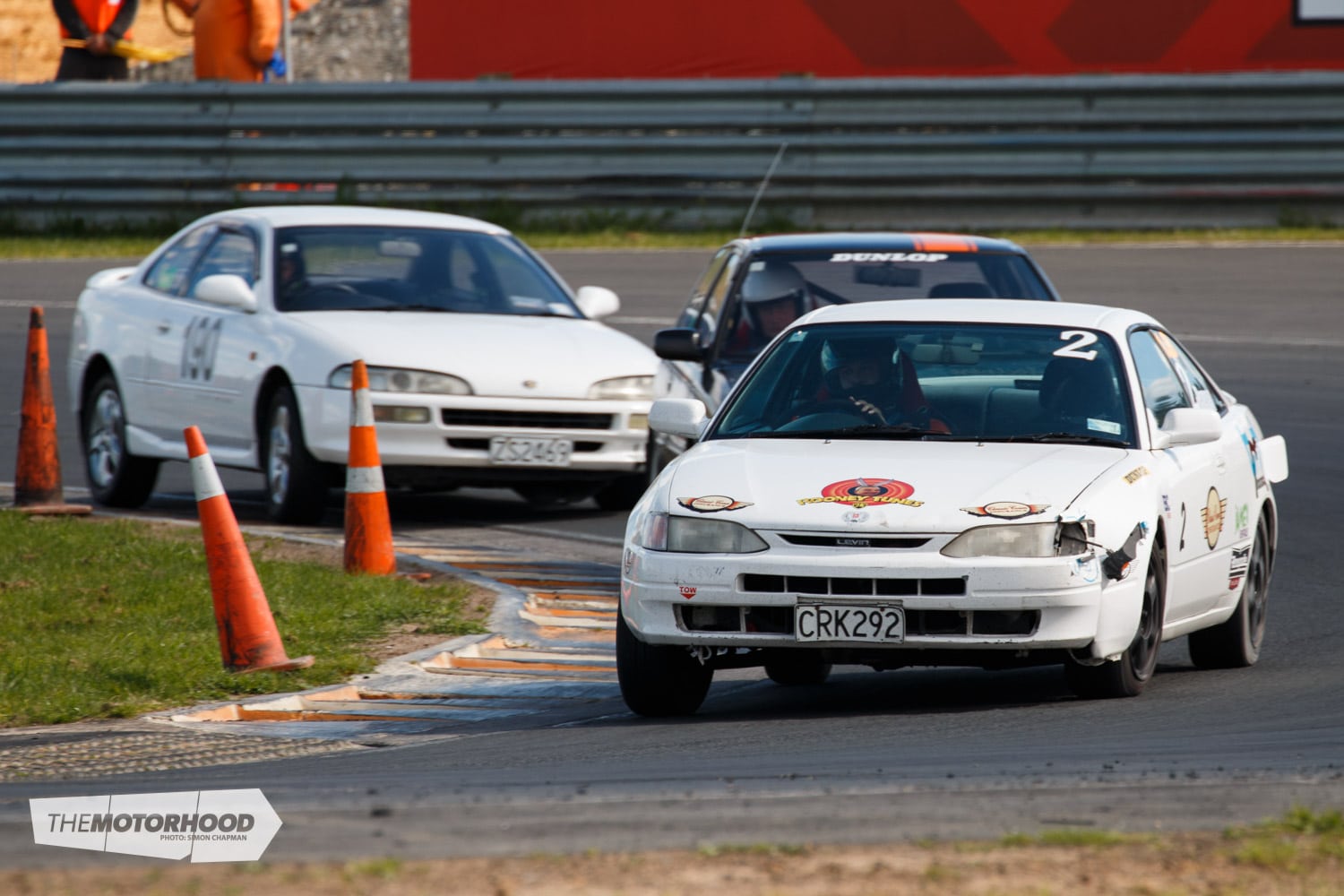
View fullsize

View fullsize
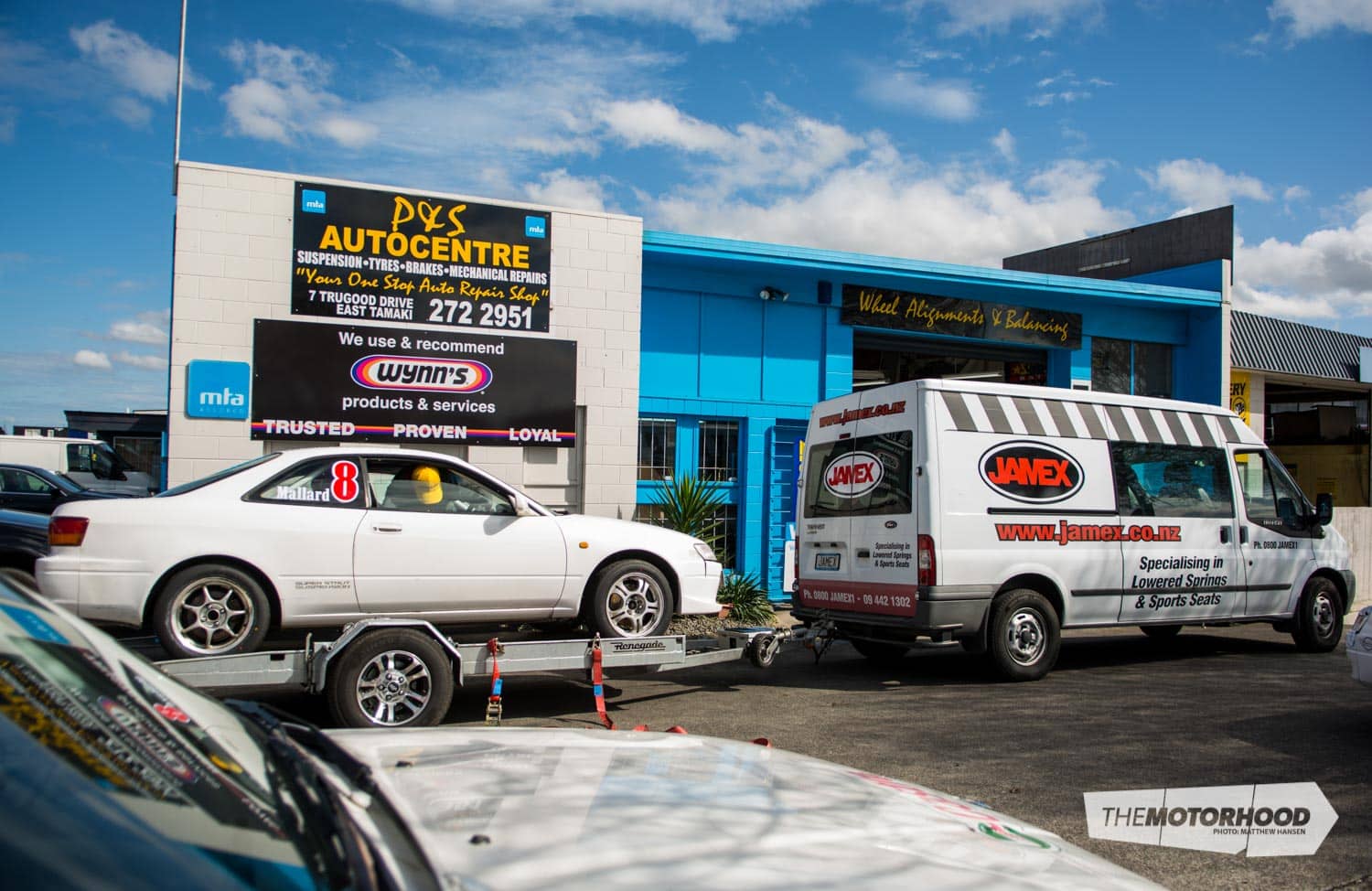
View fullsize
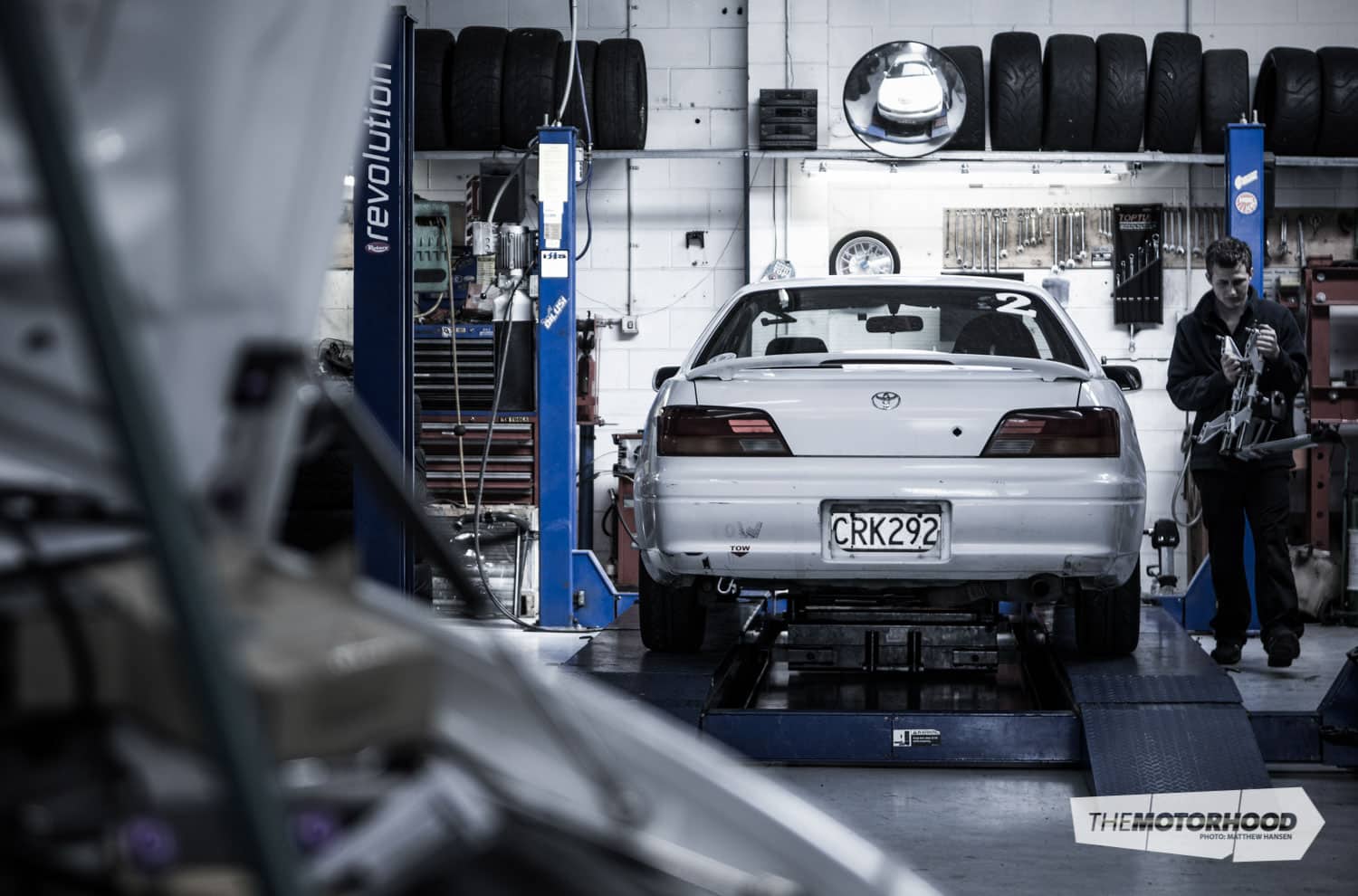
View fullsize
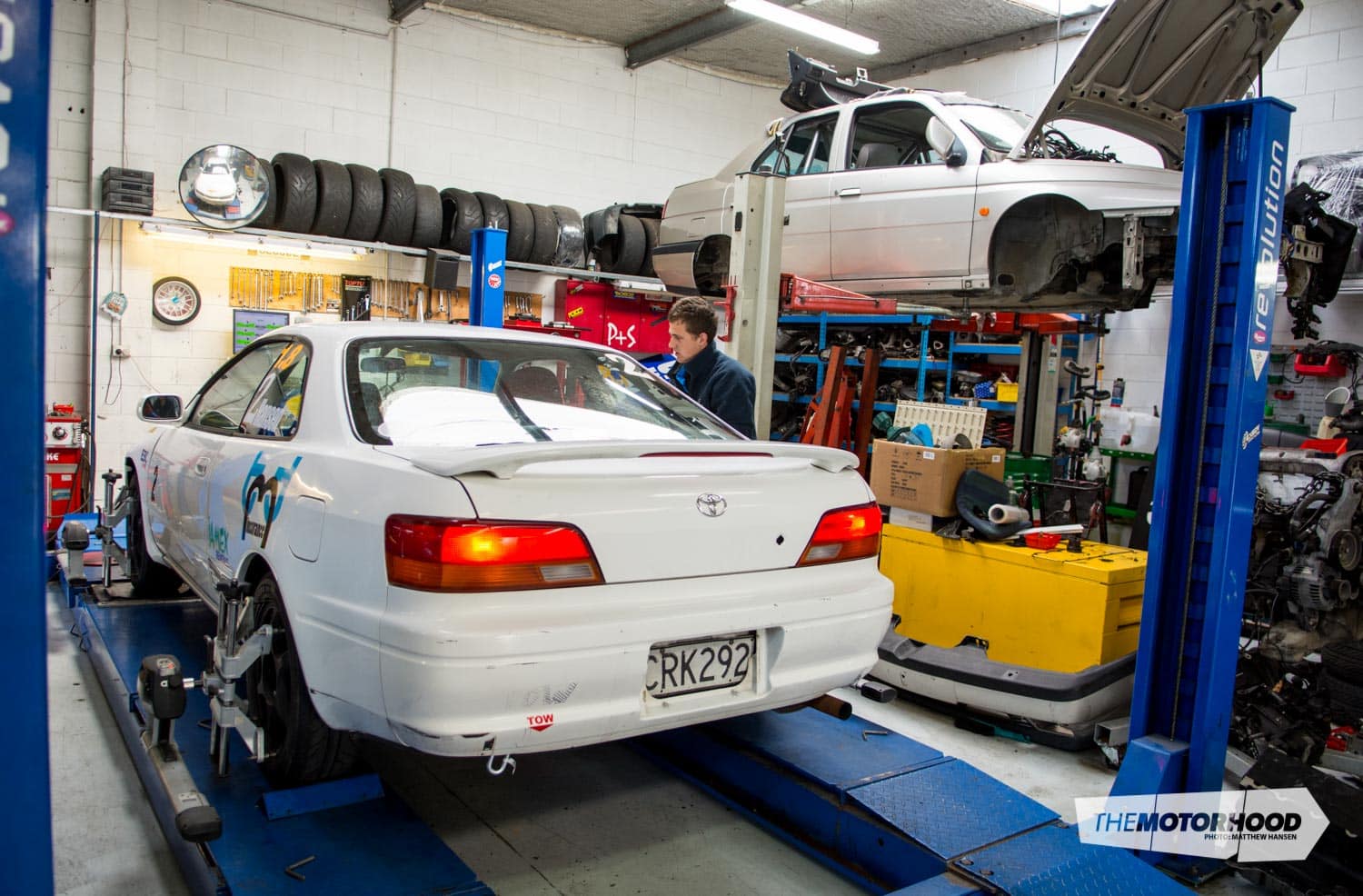
View fullsize
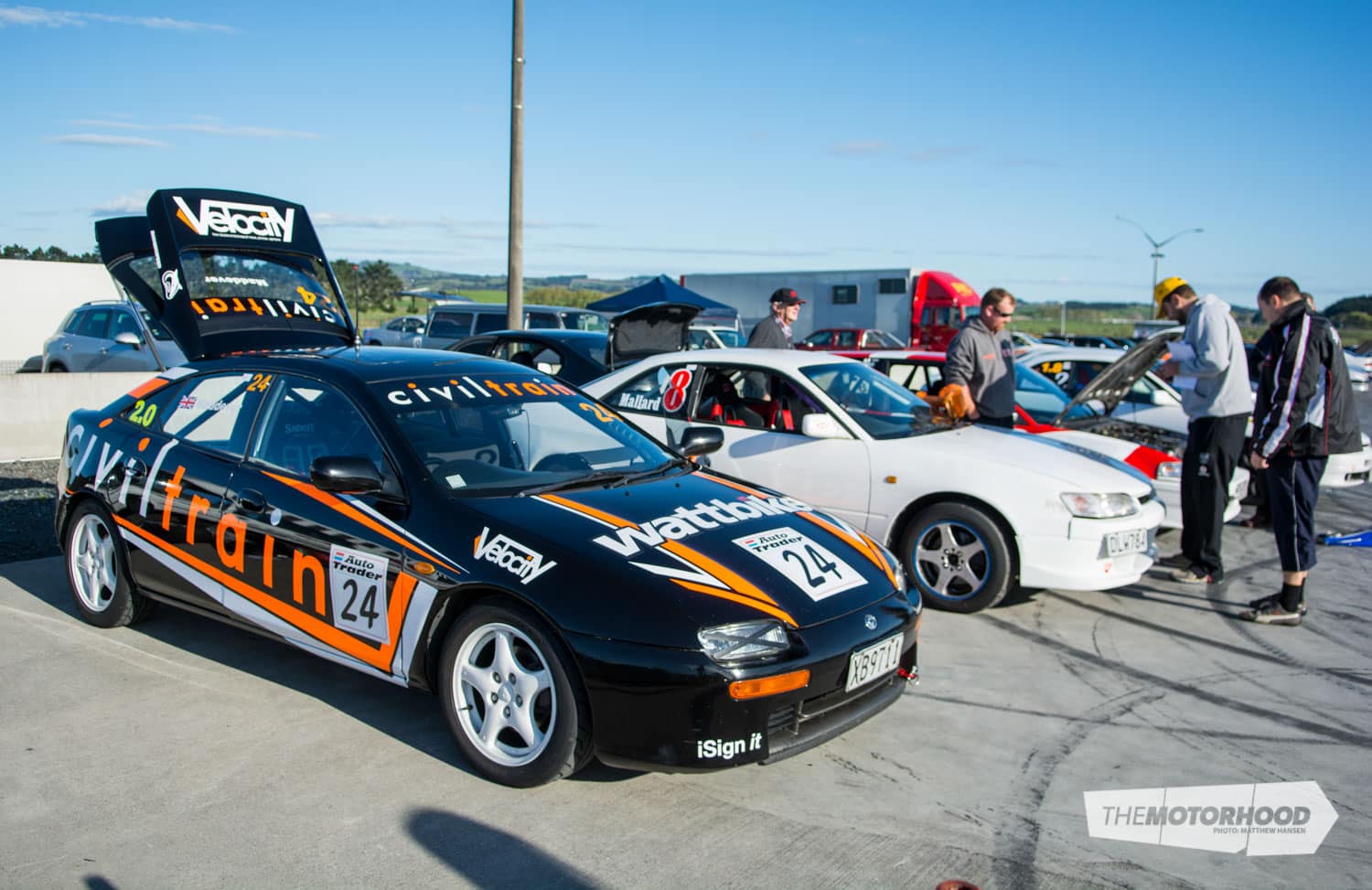
View fullsize
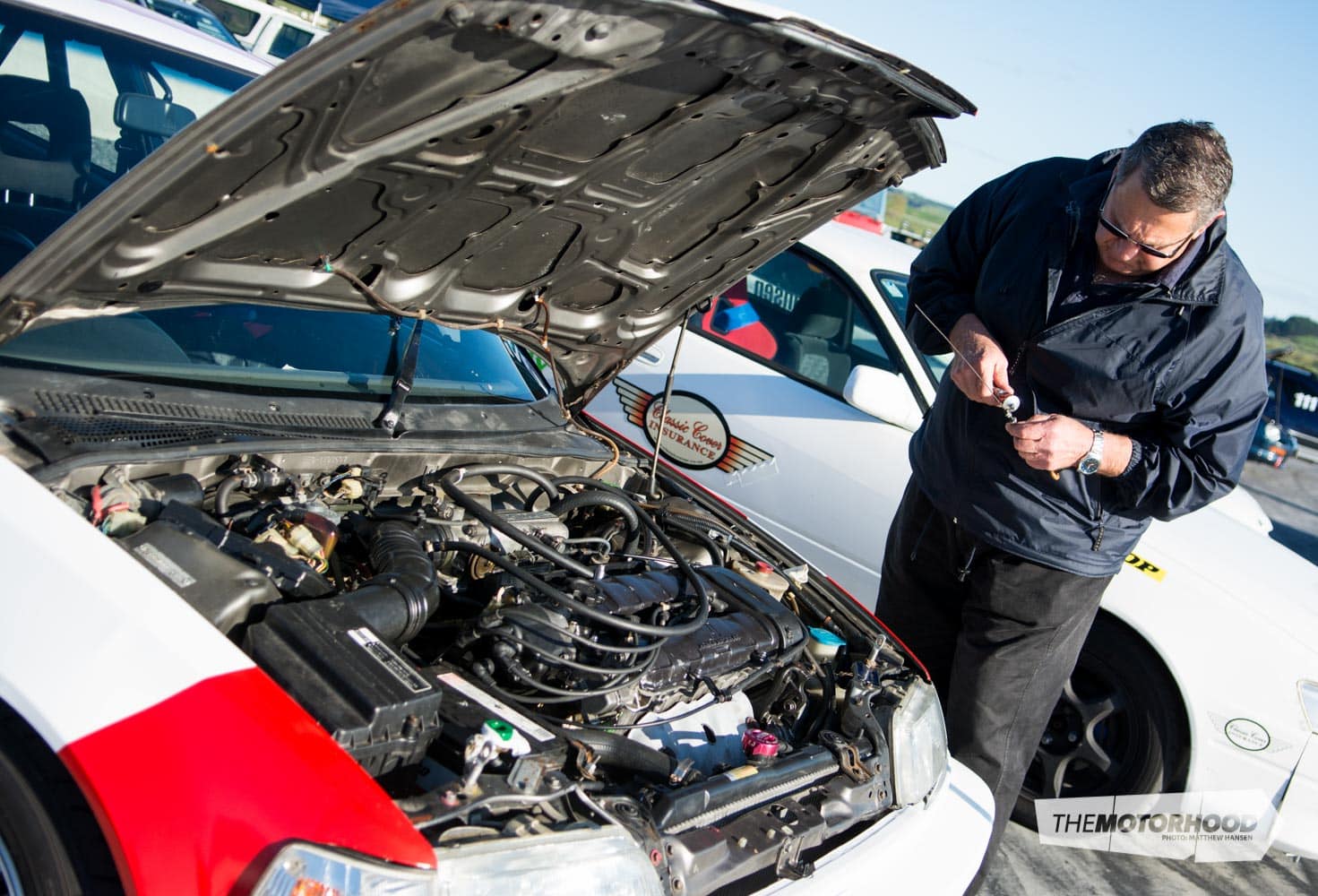
View fullsize
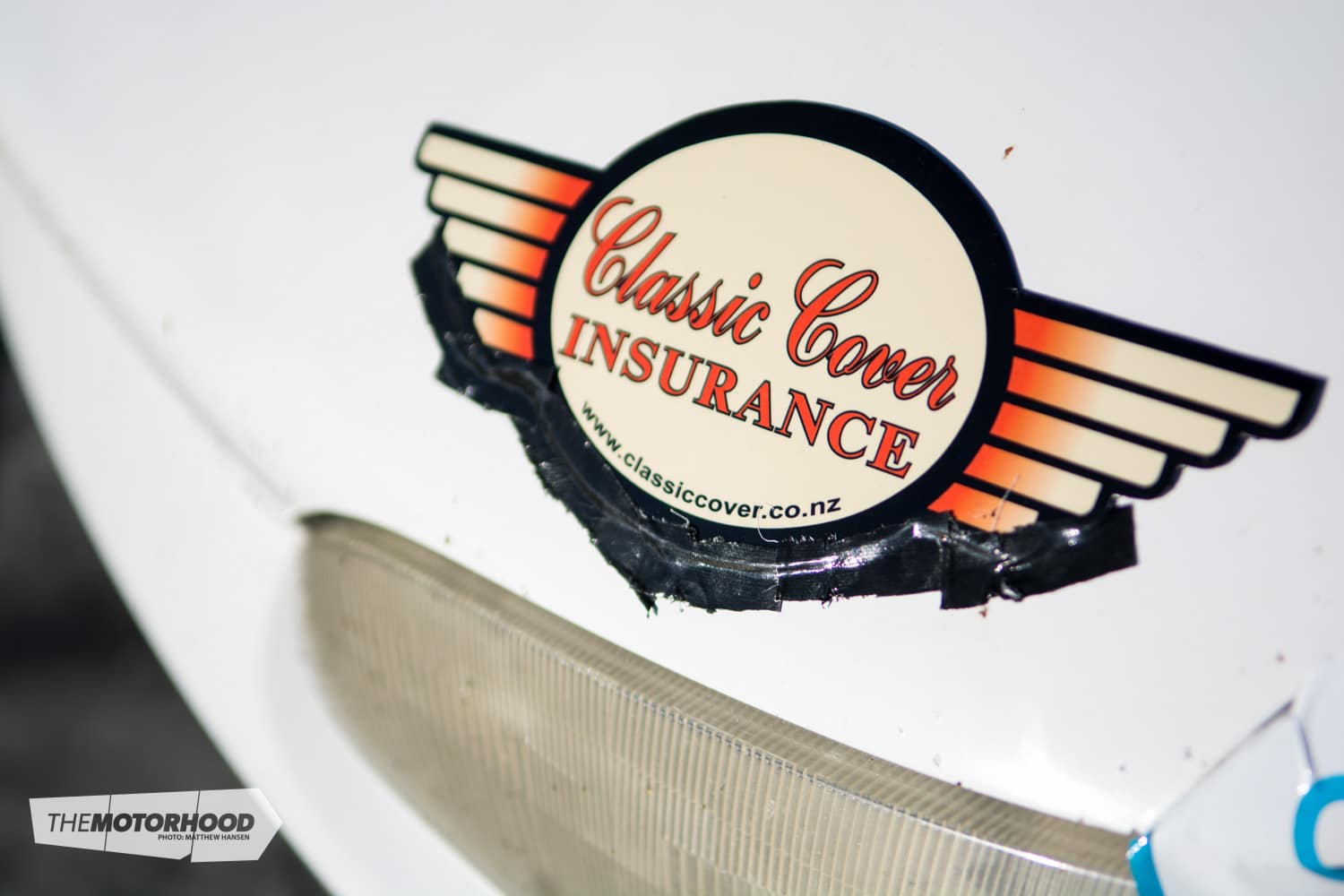
View fullsize

View fullsize
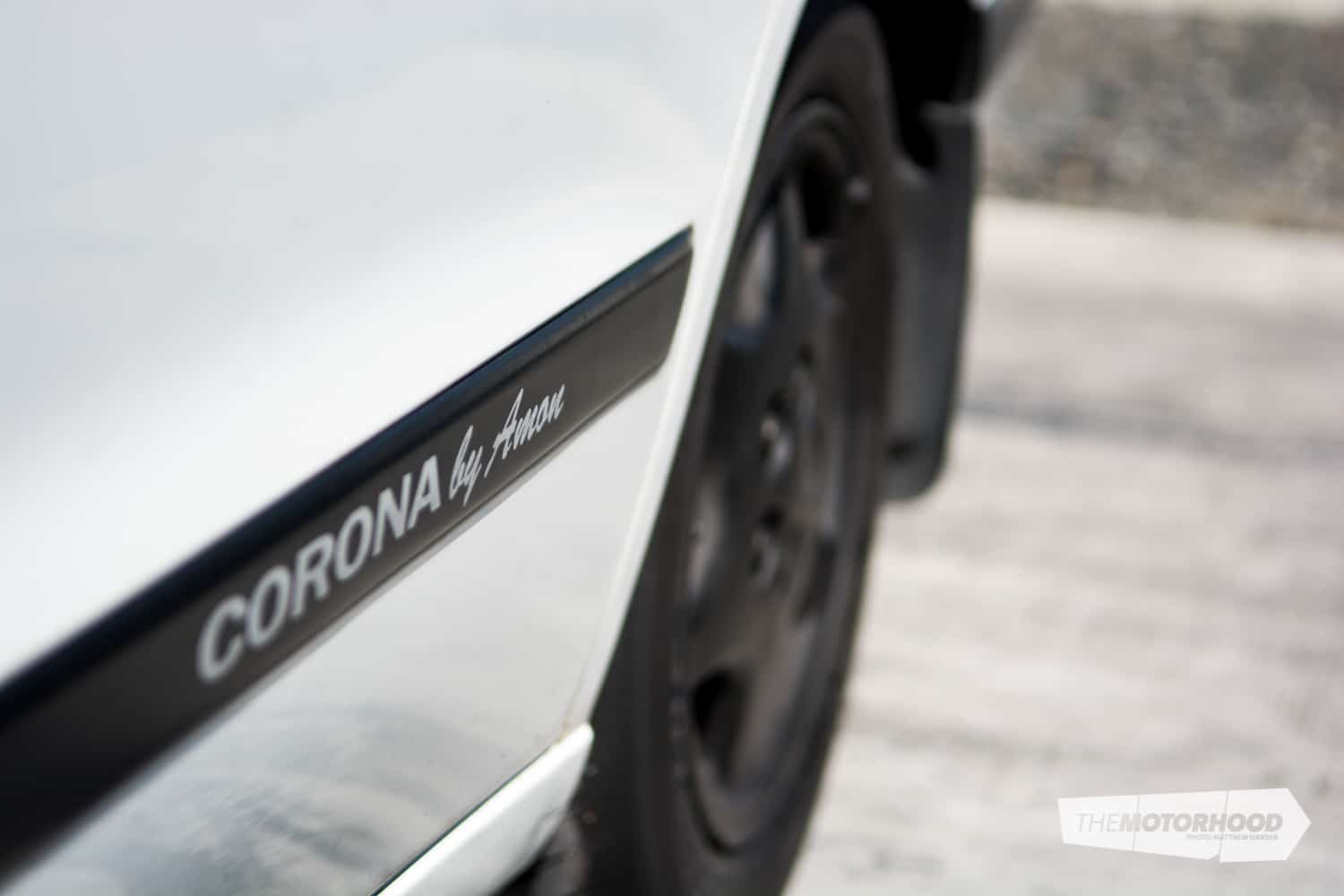
View fullsize

View fullsize
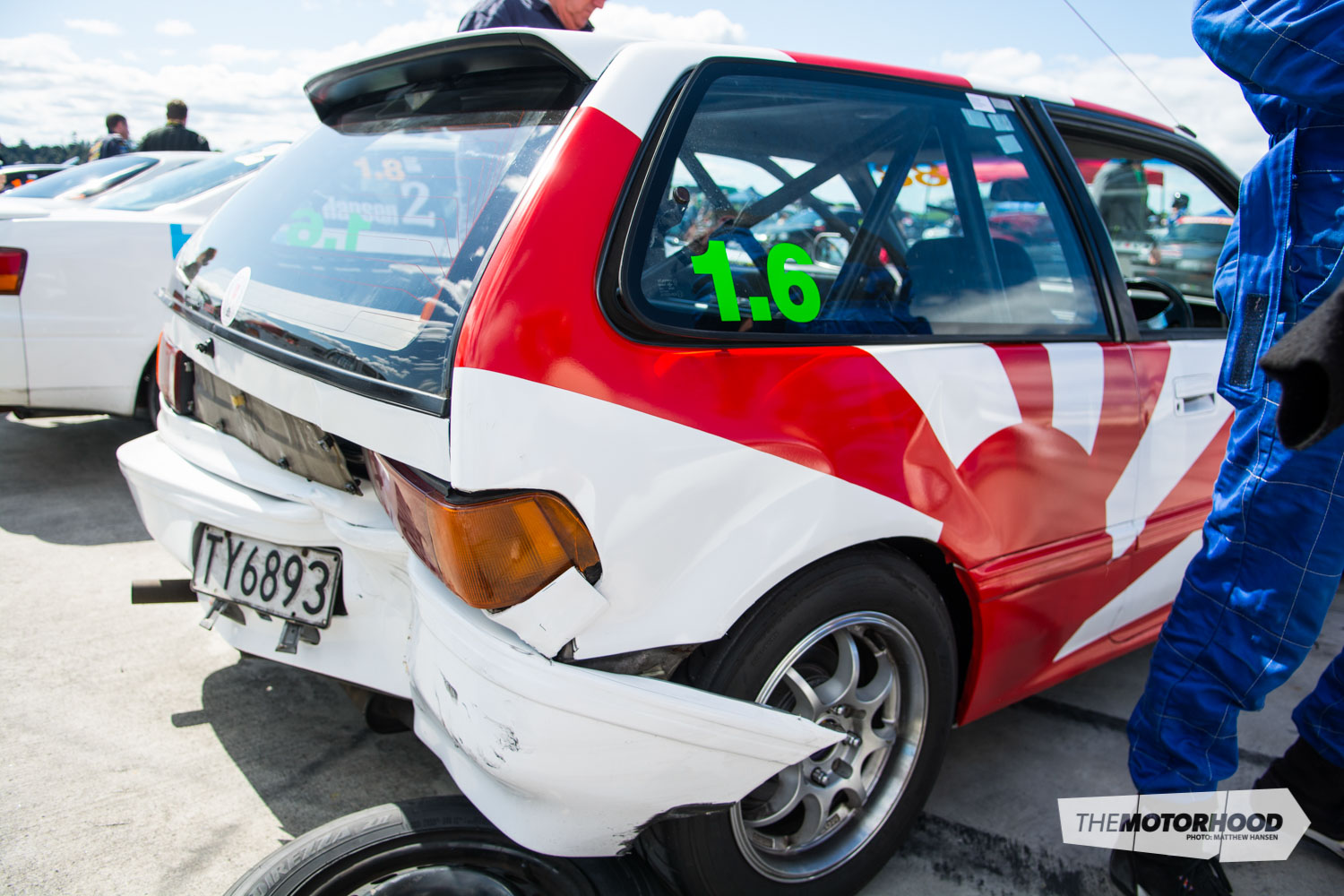
View fullsize
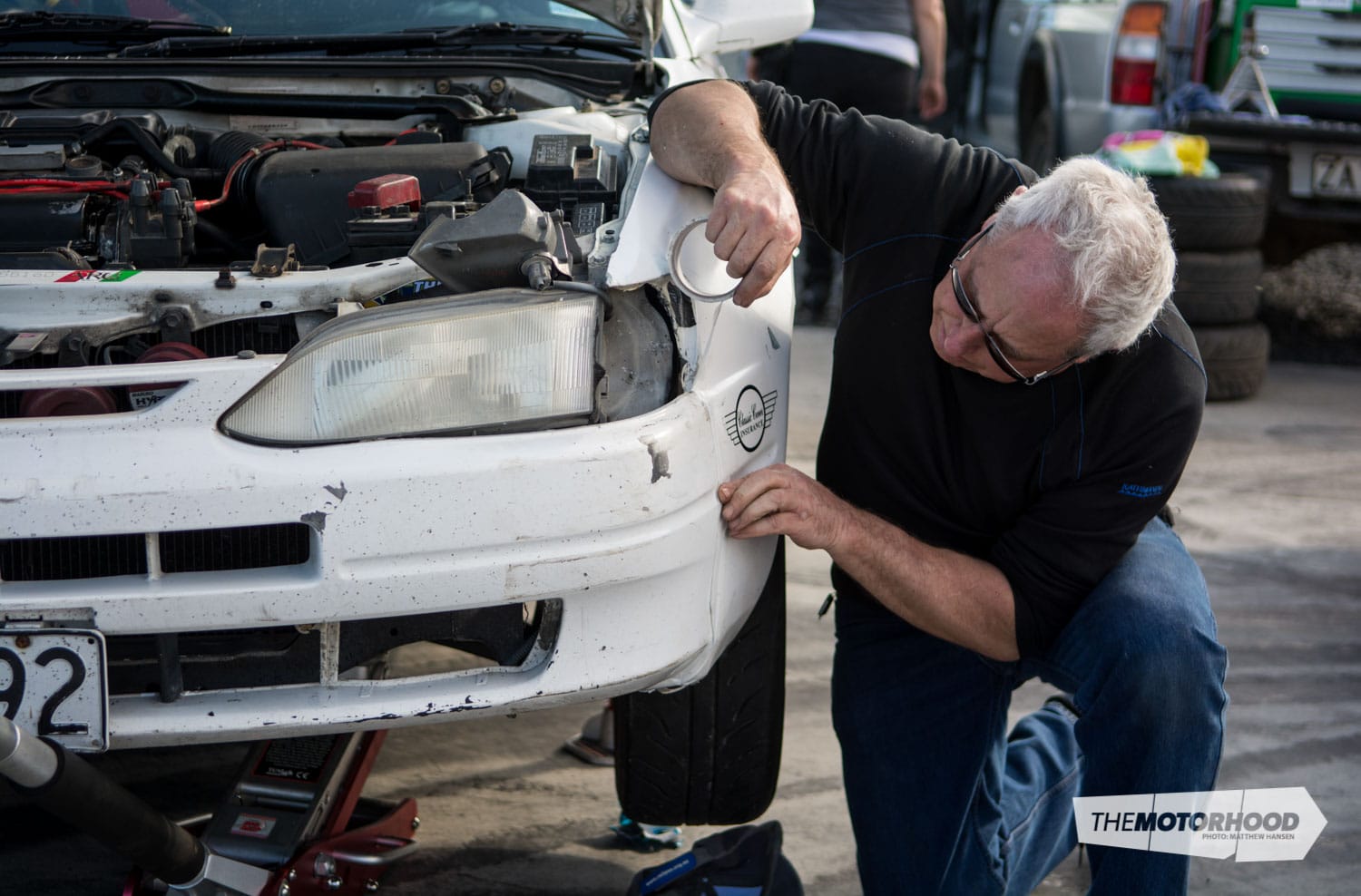
View fullsize
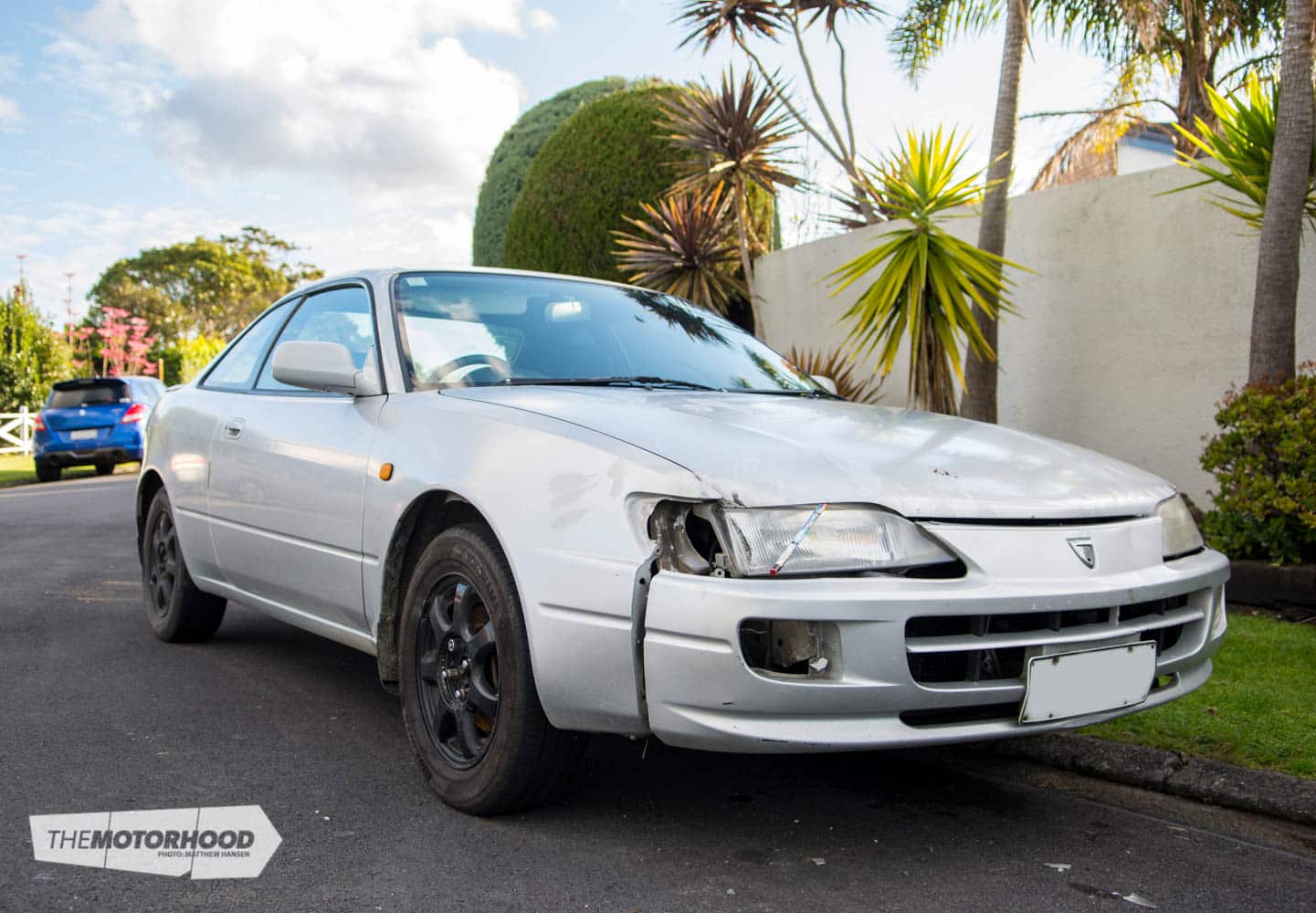
View fullsize
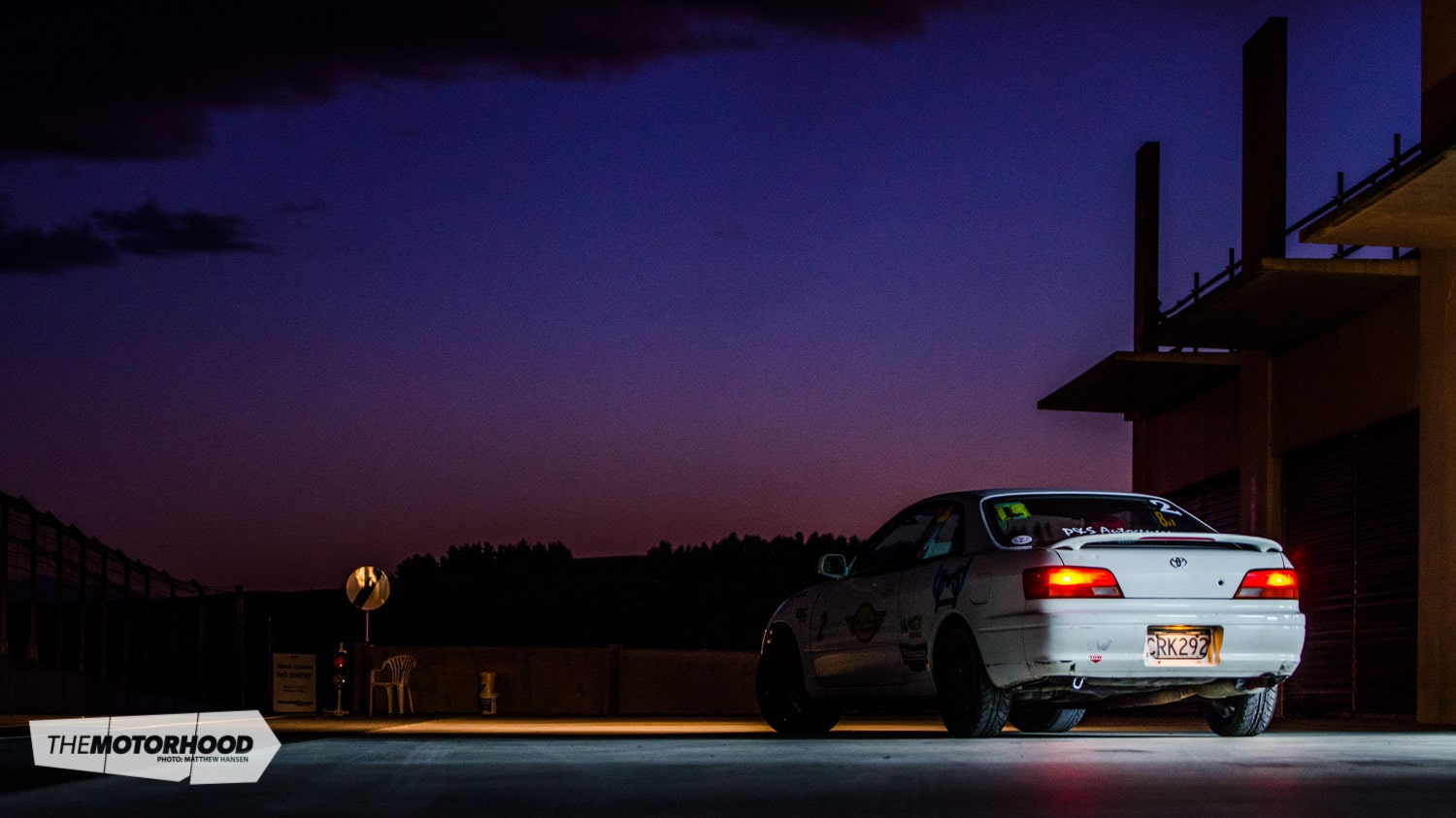
View fullsize
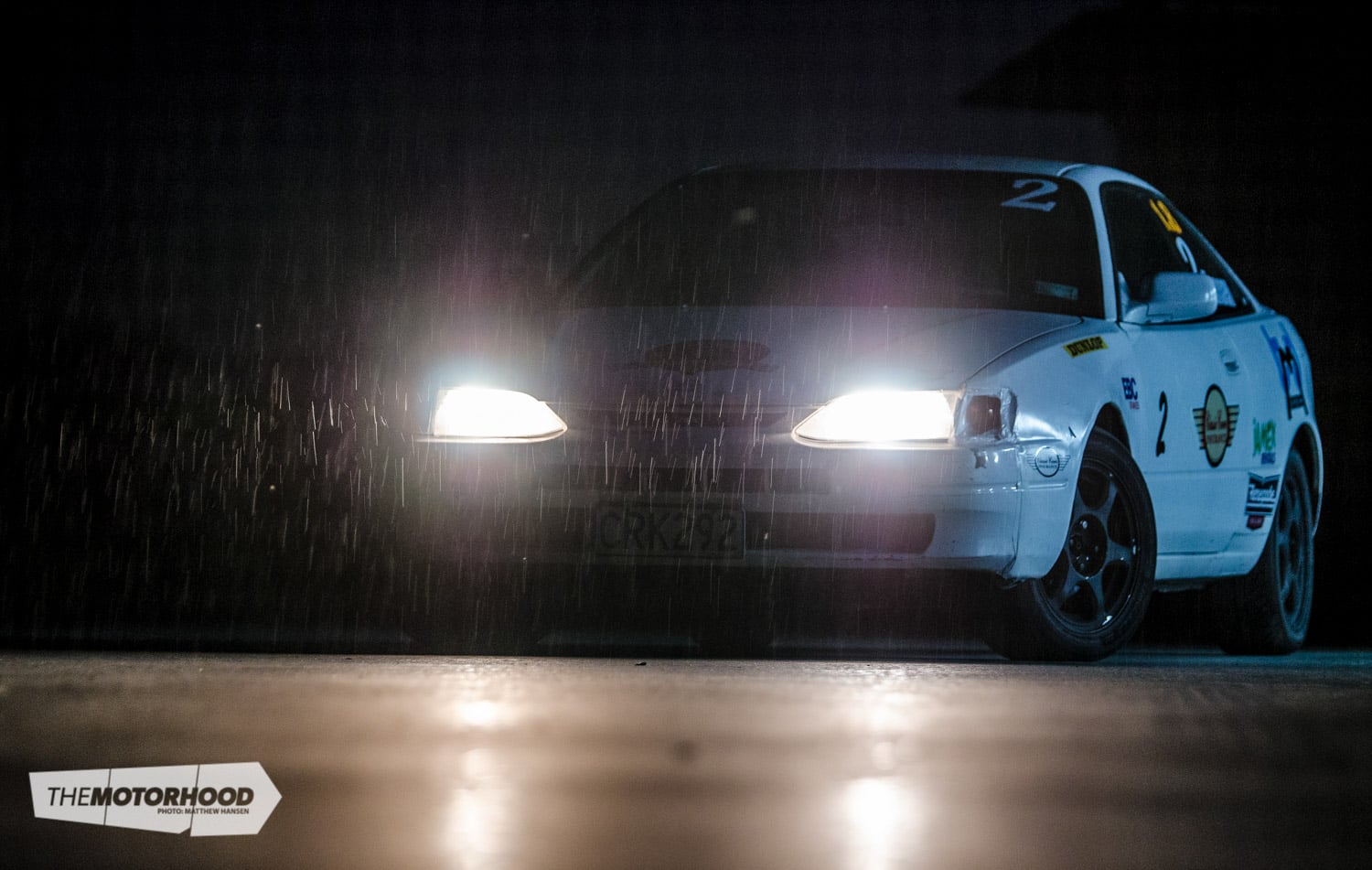
View fullsize
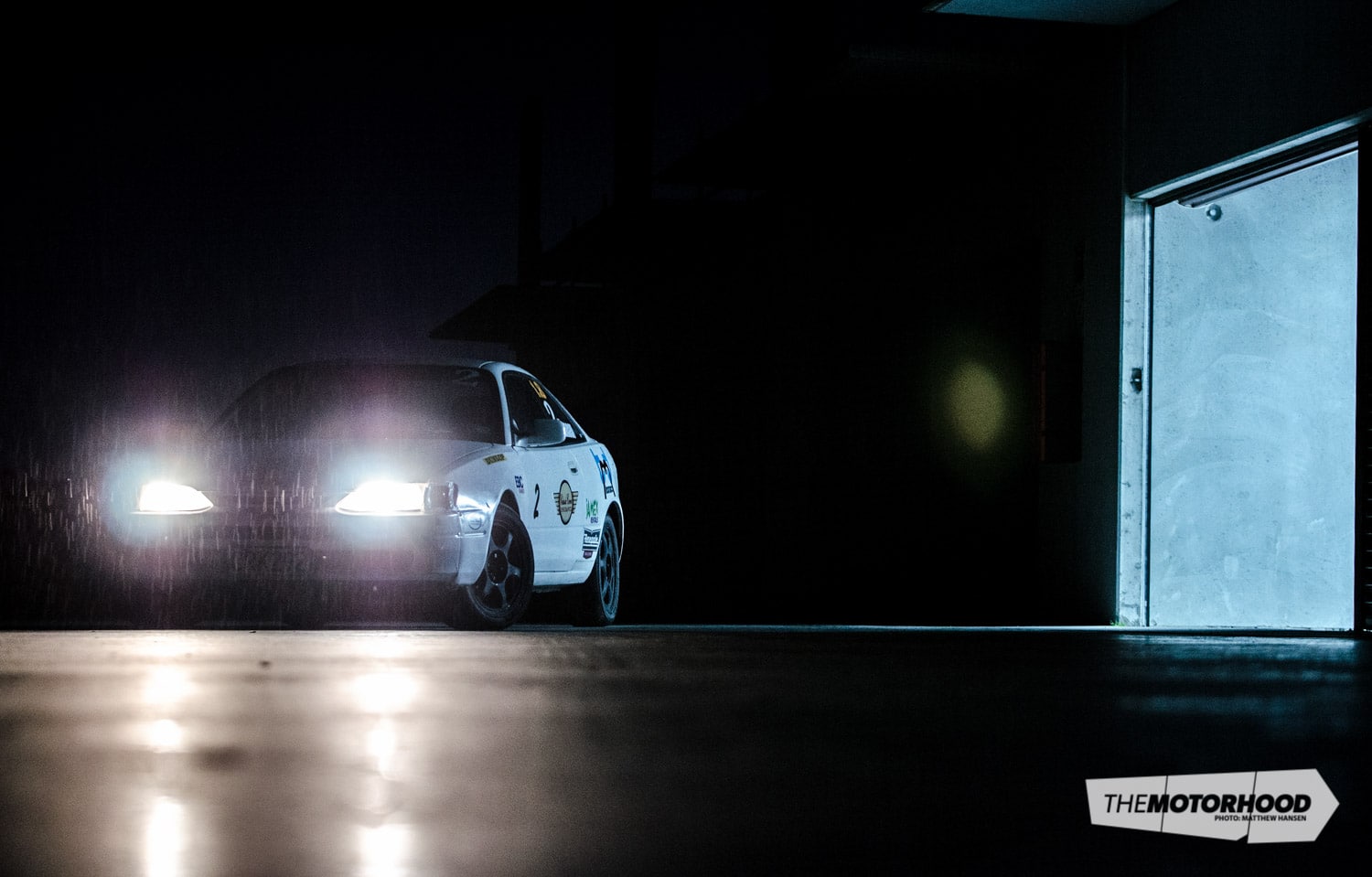
View fullsize

View fullsize






